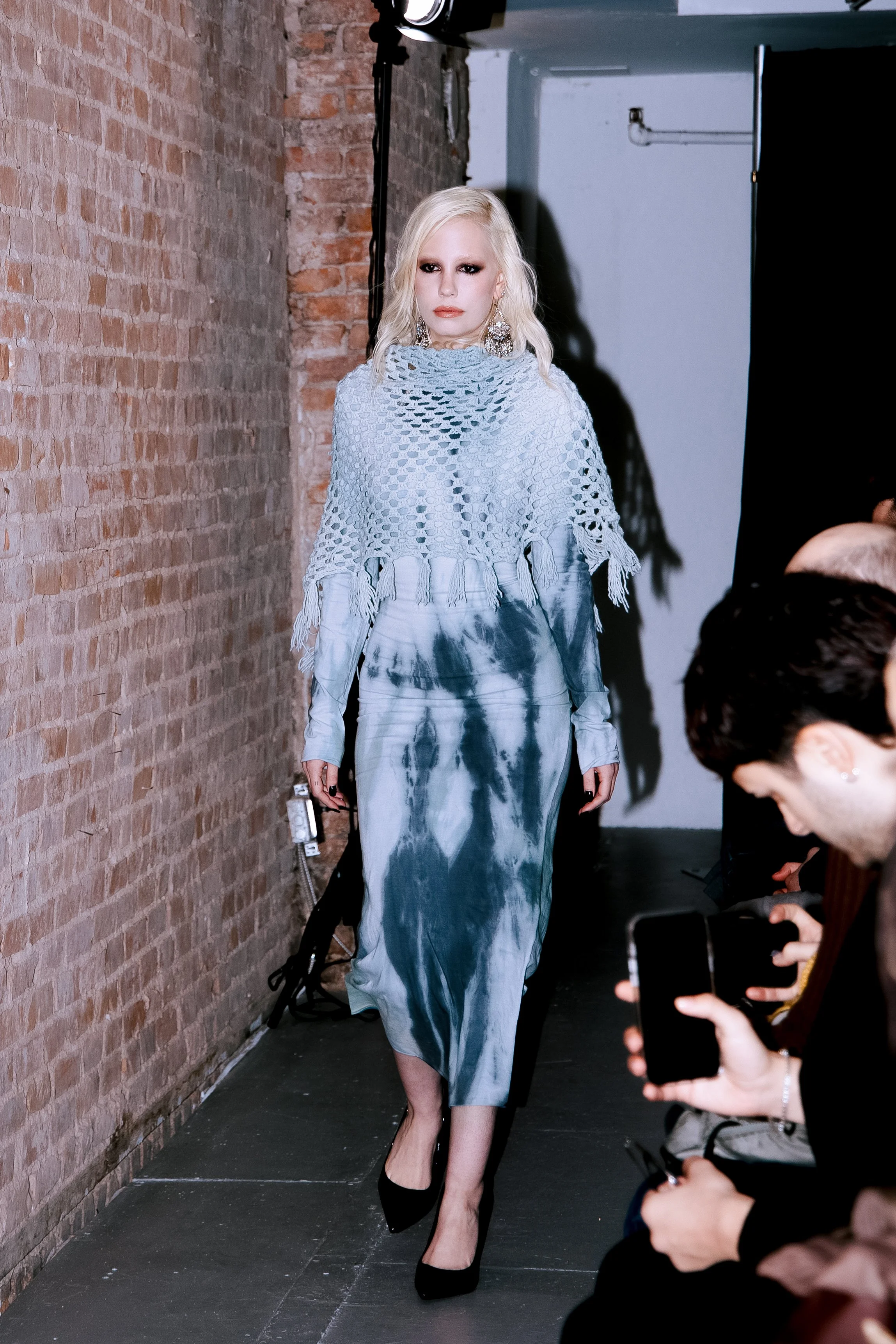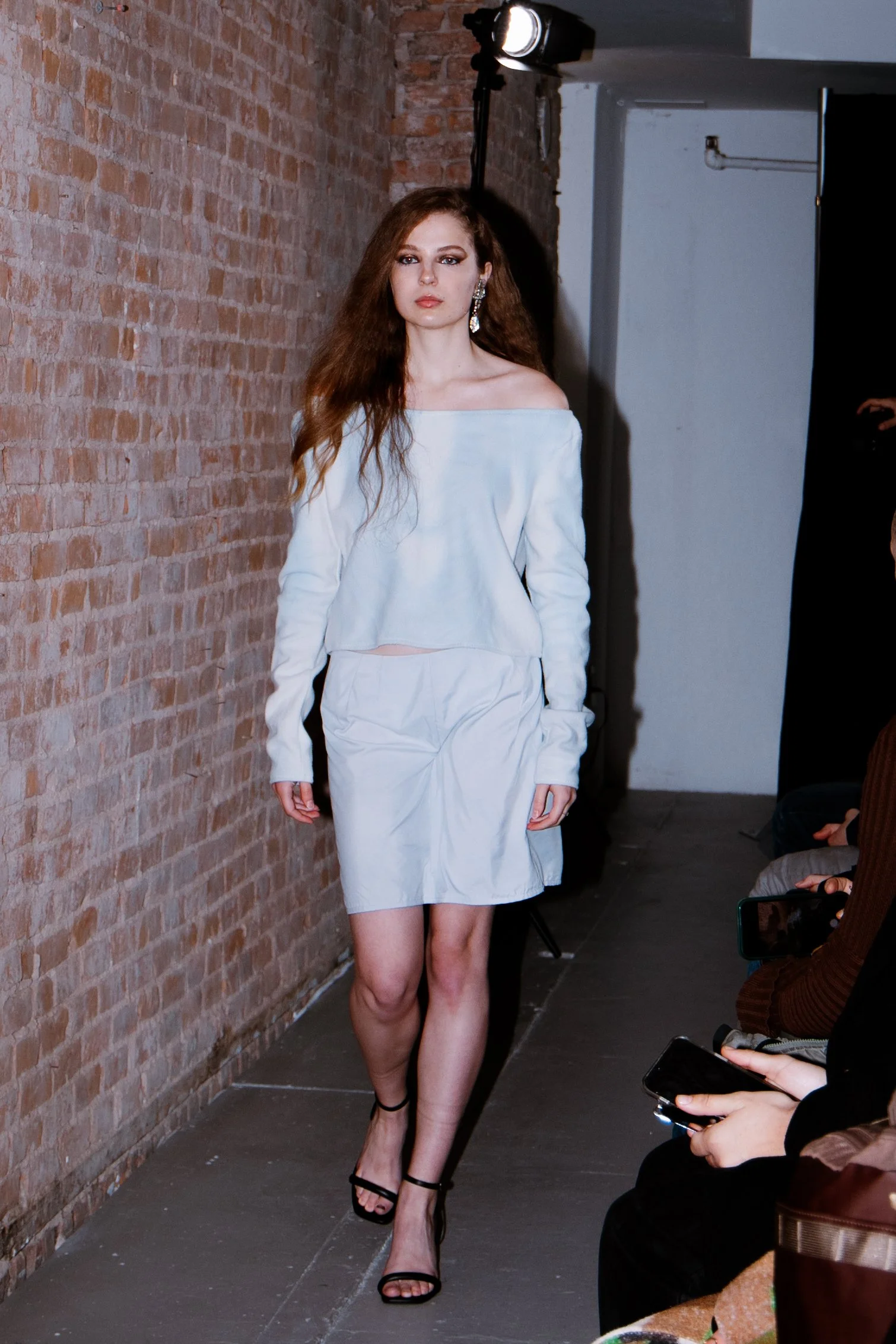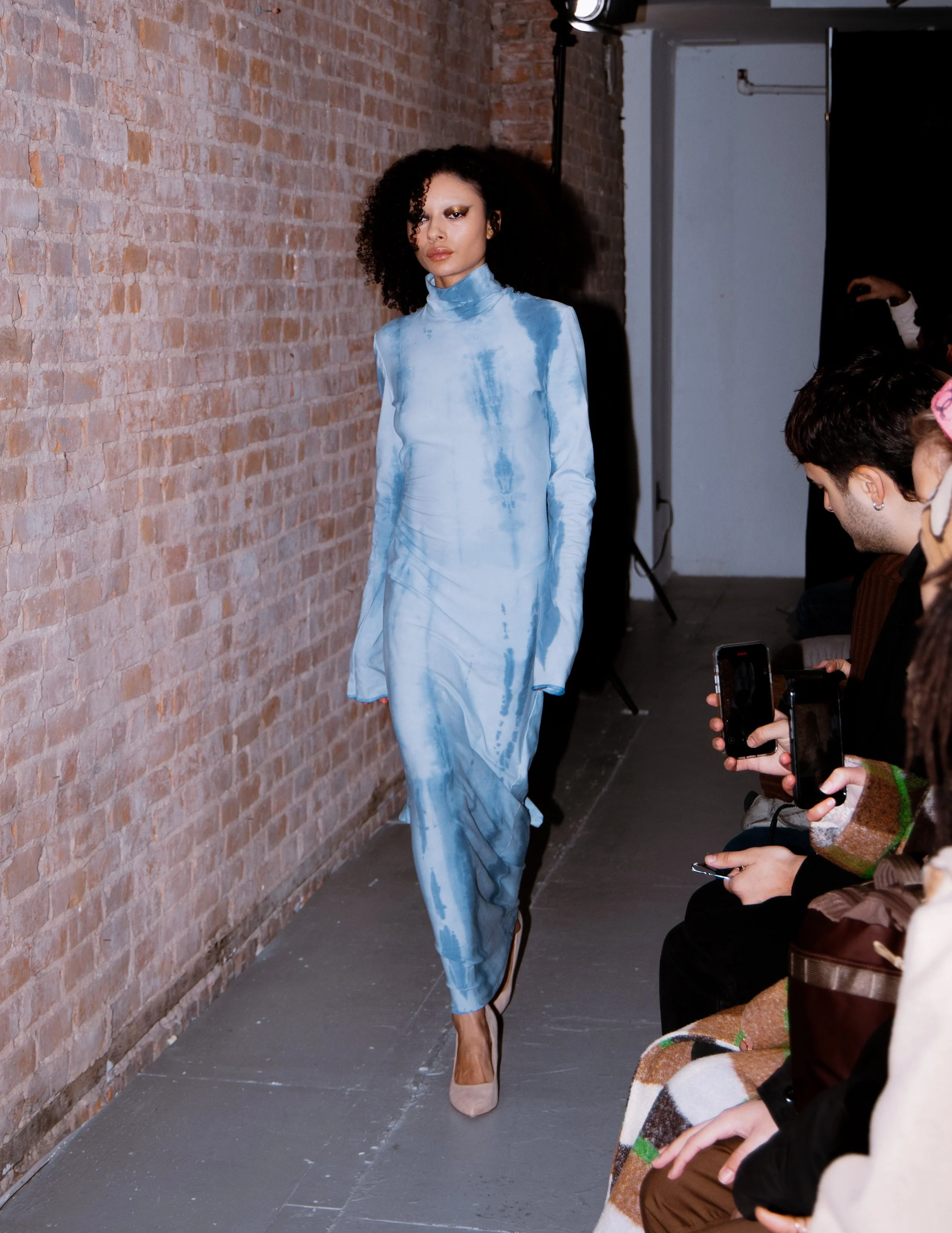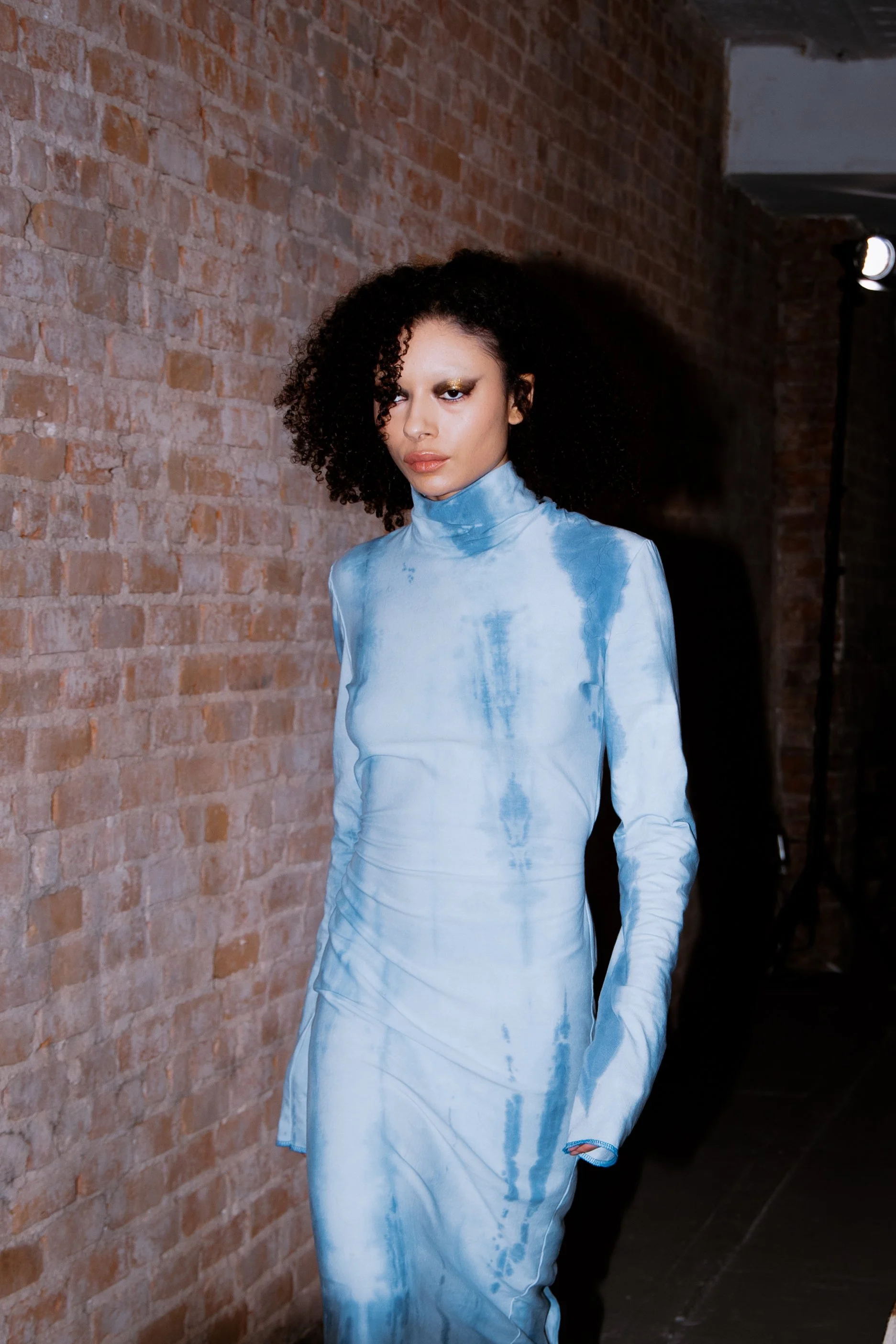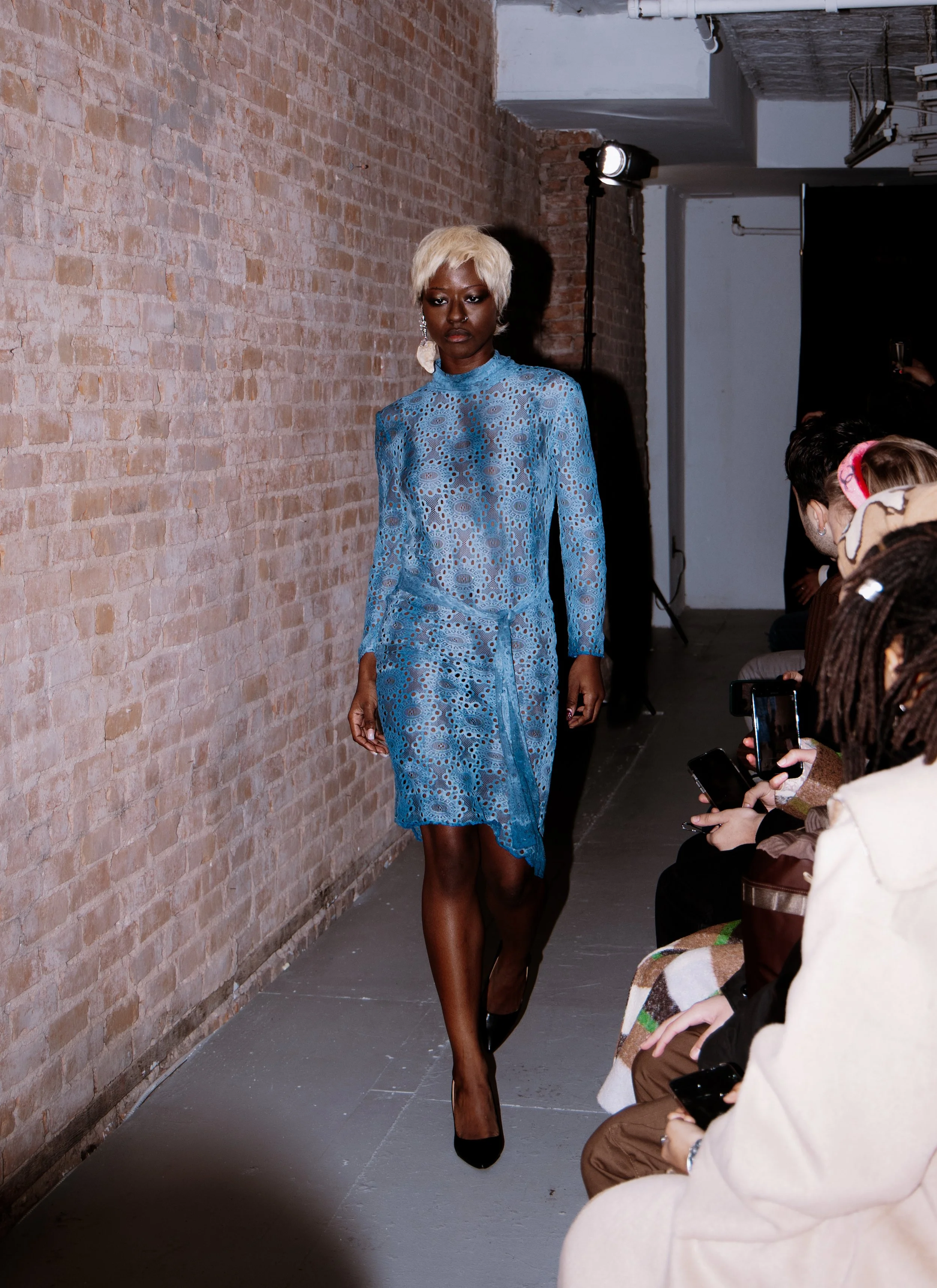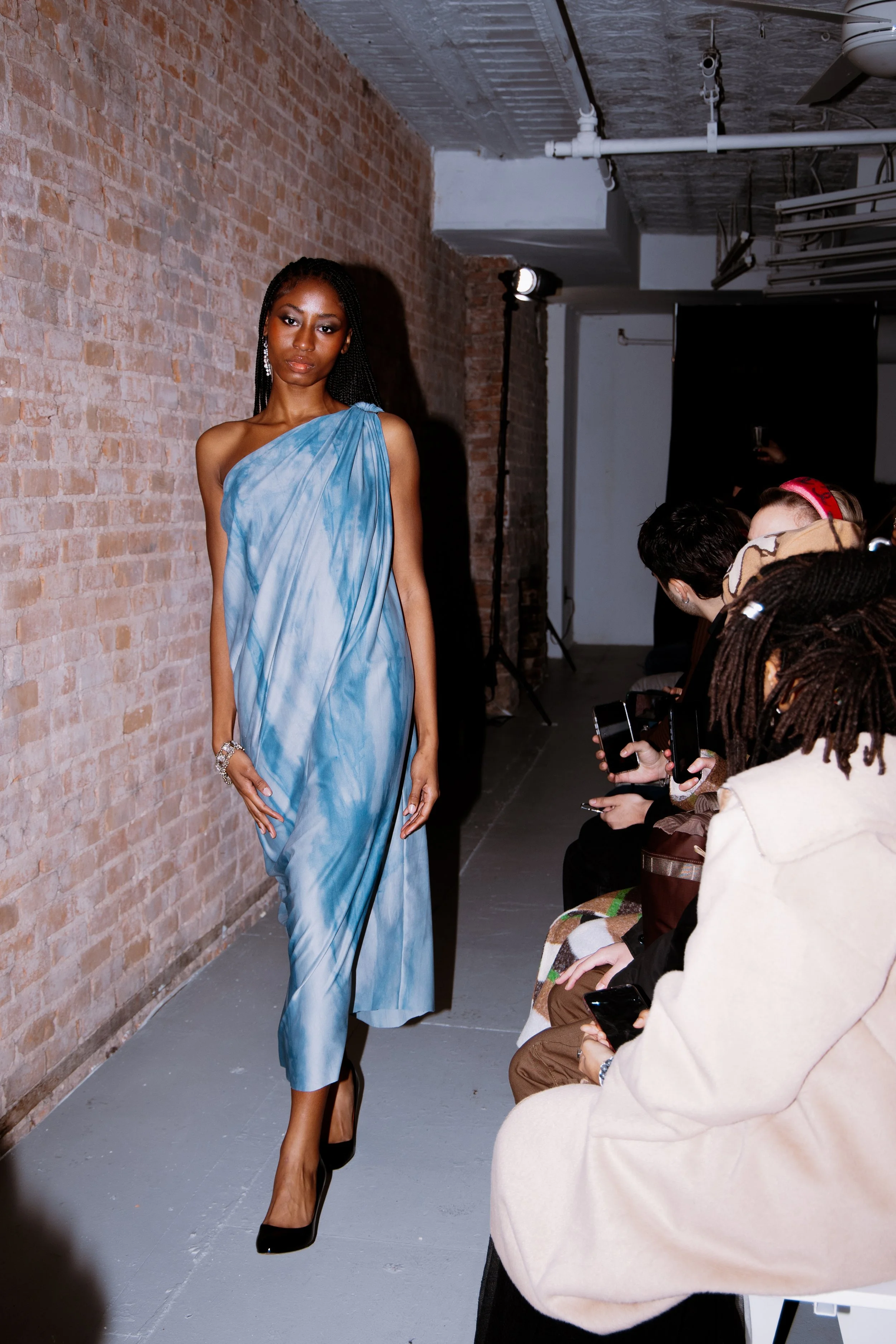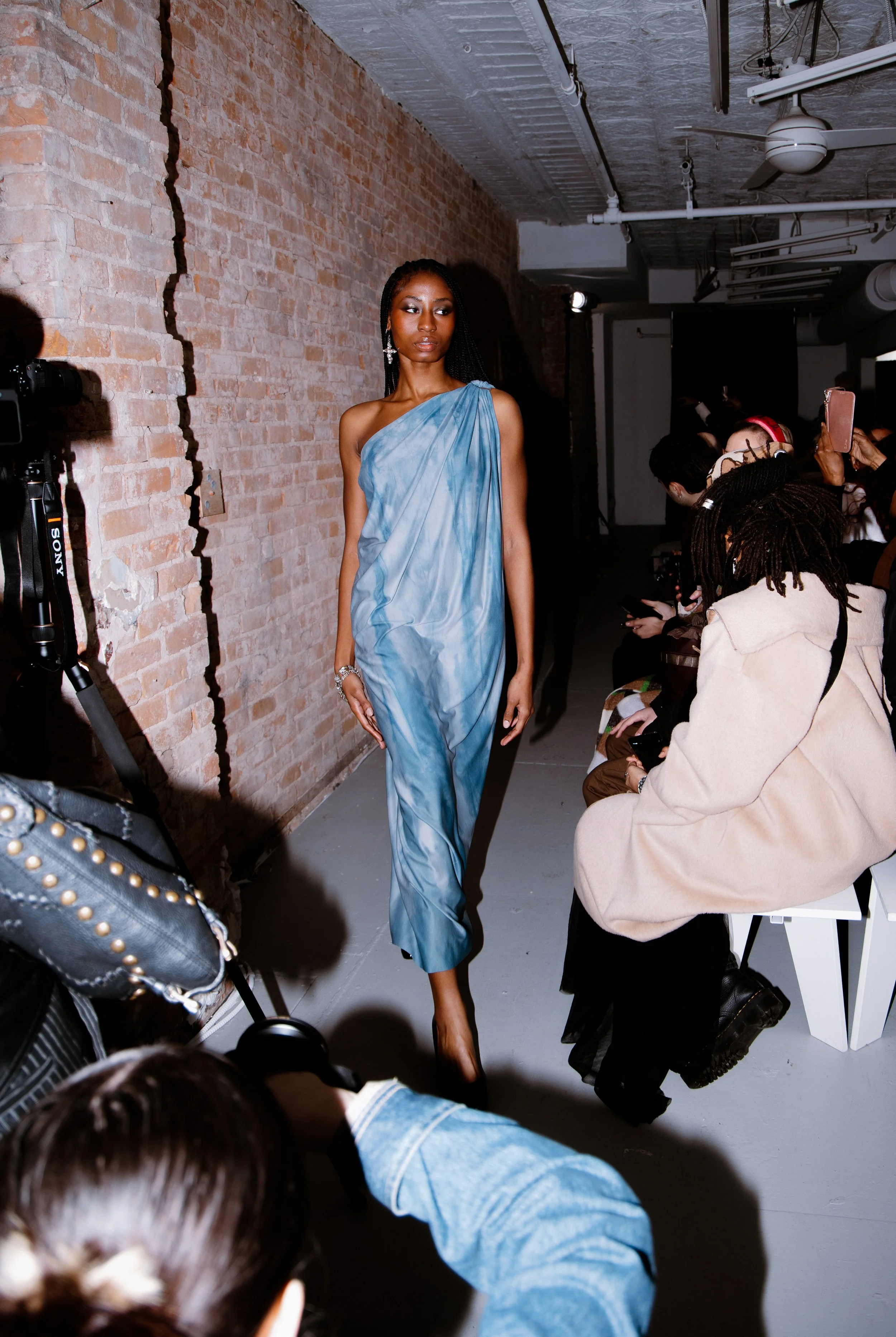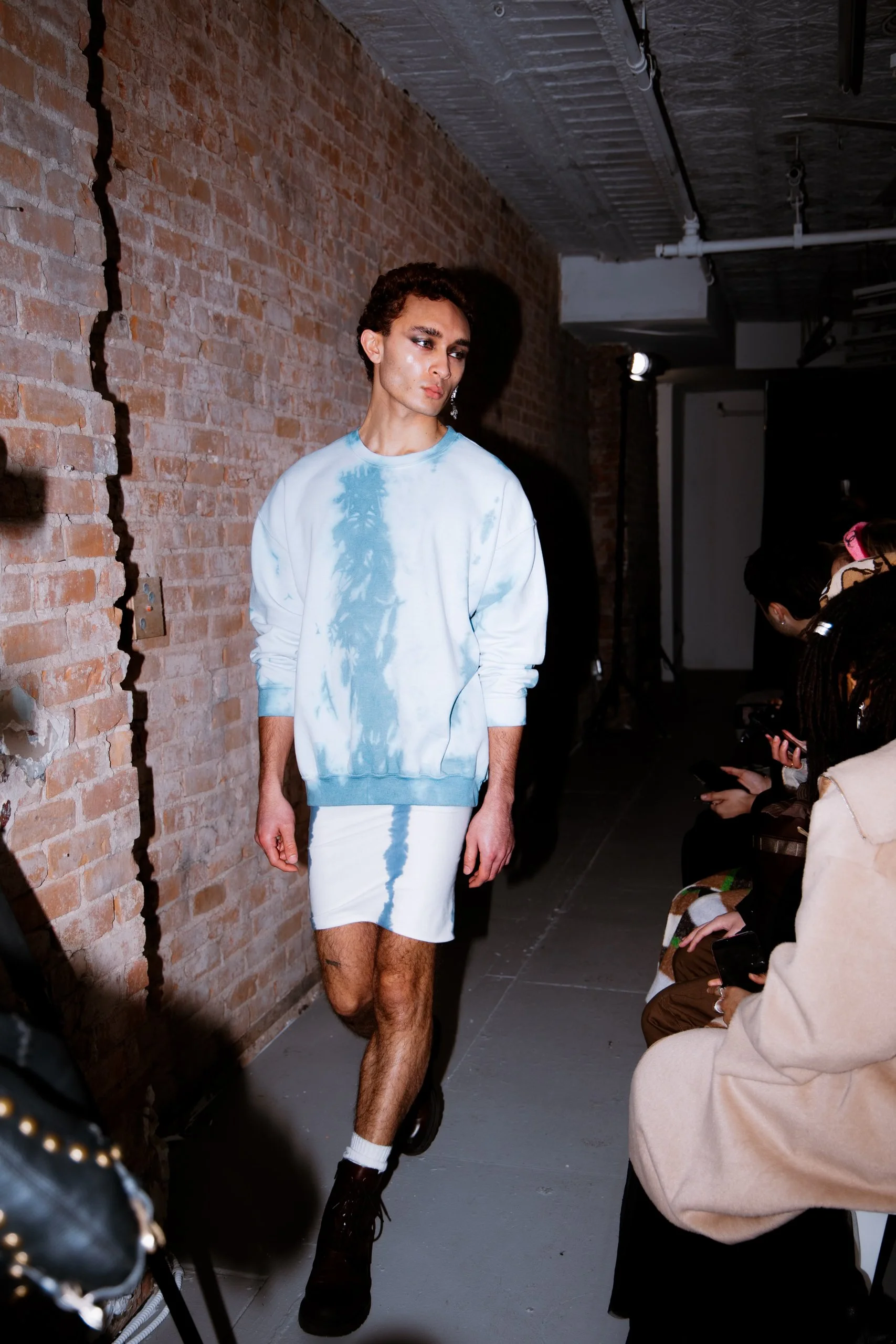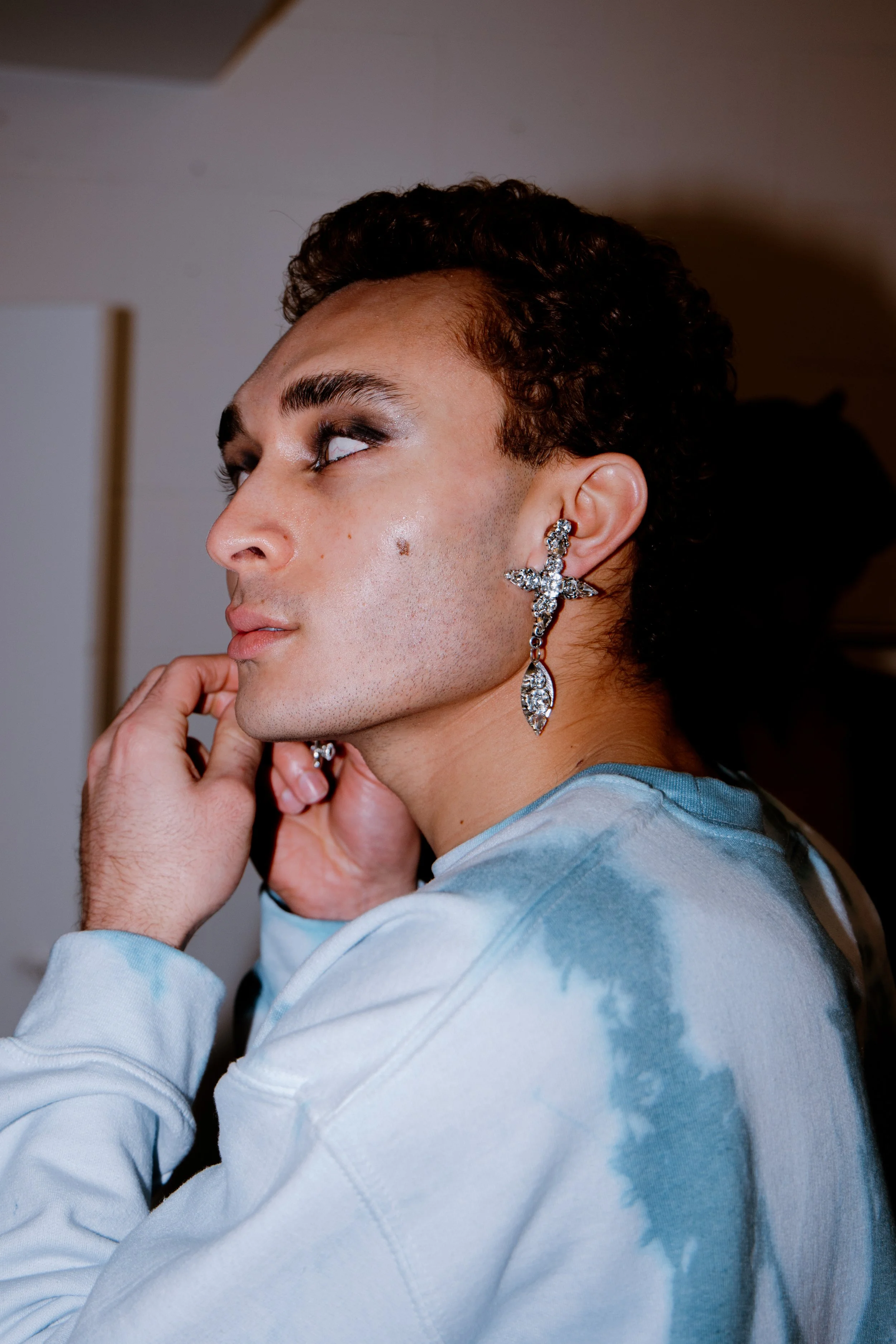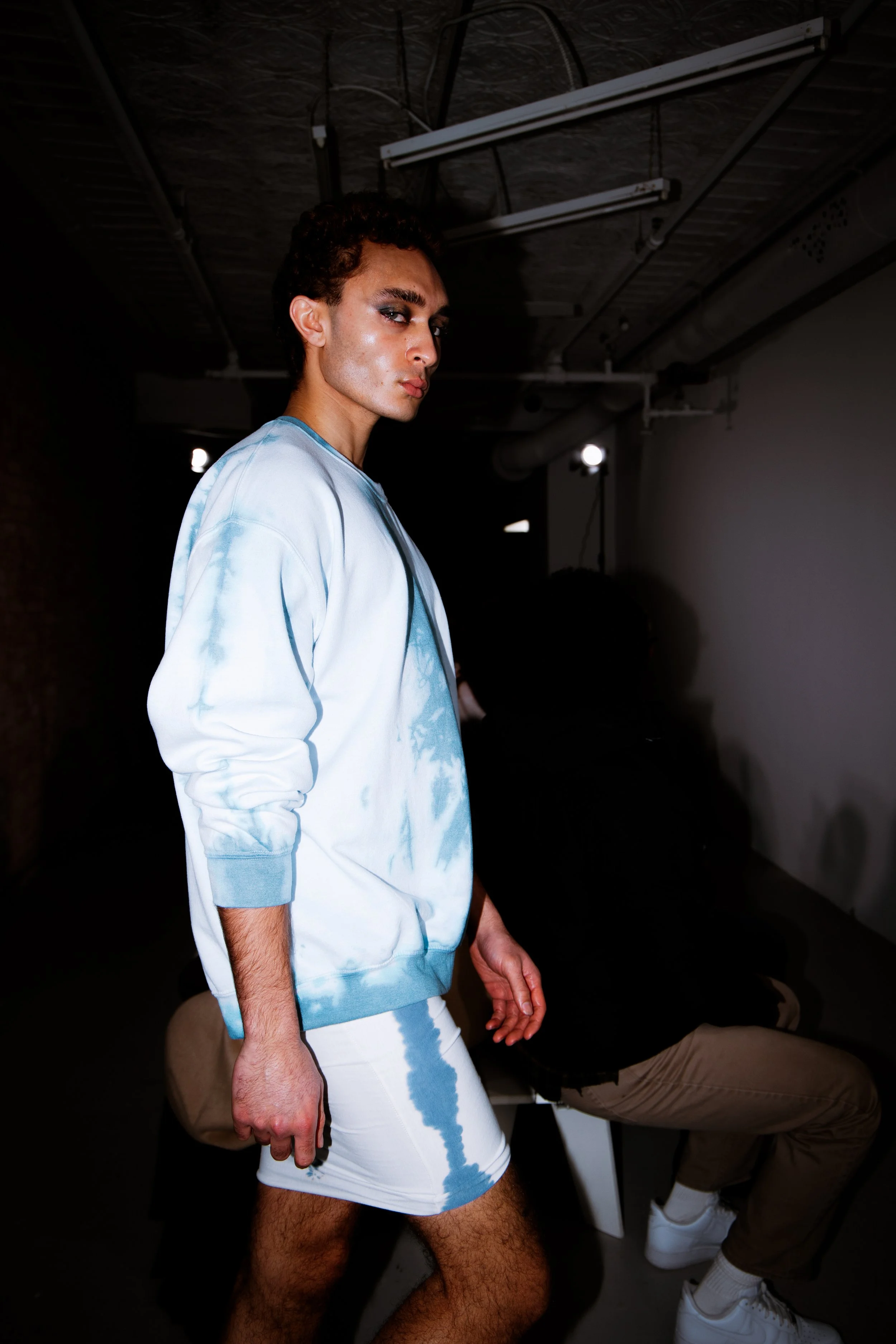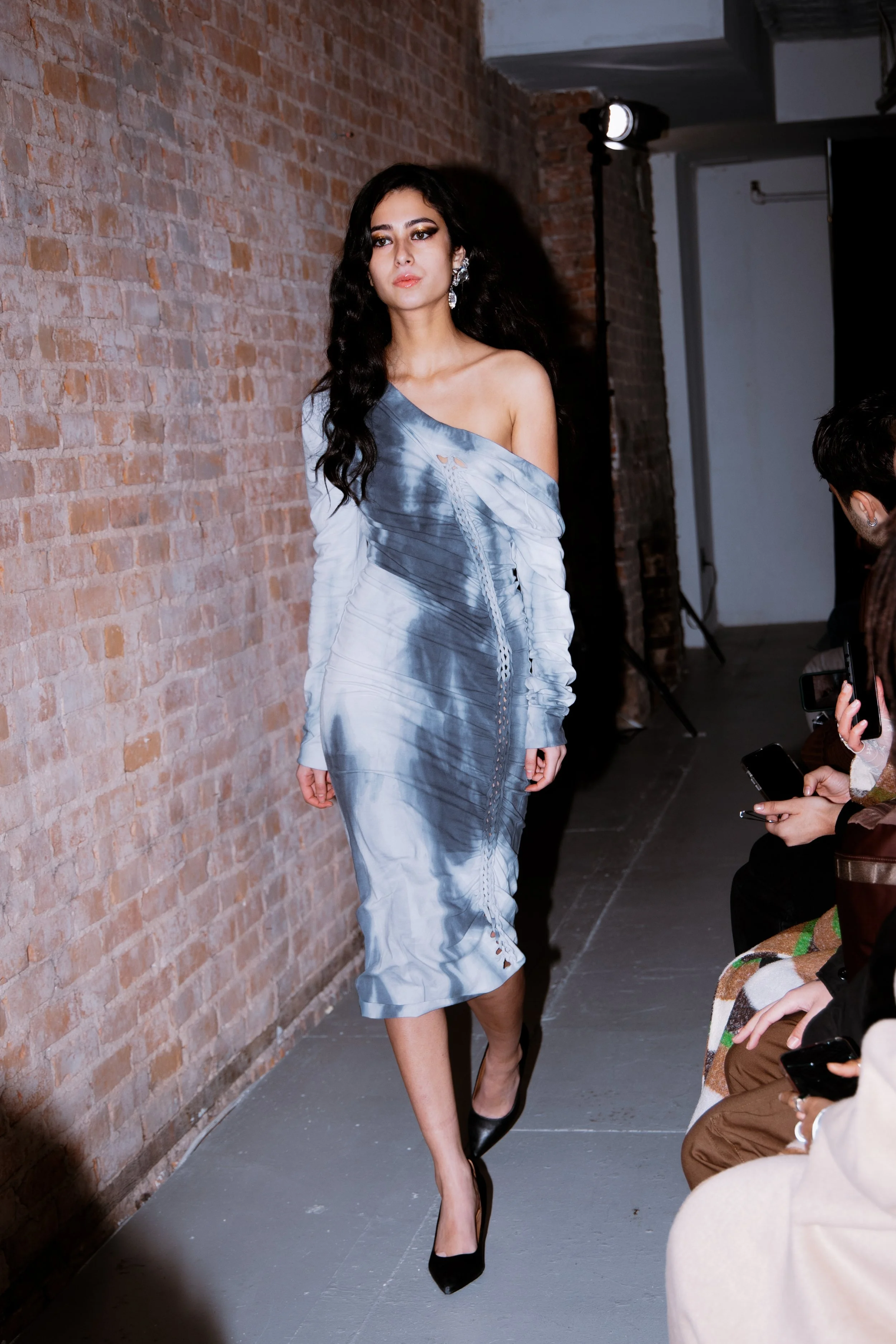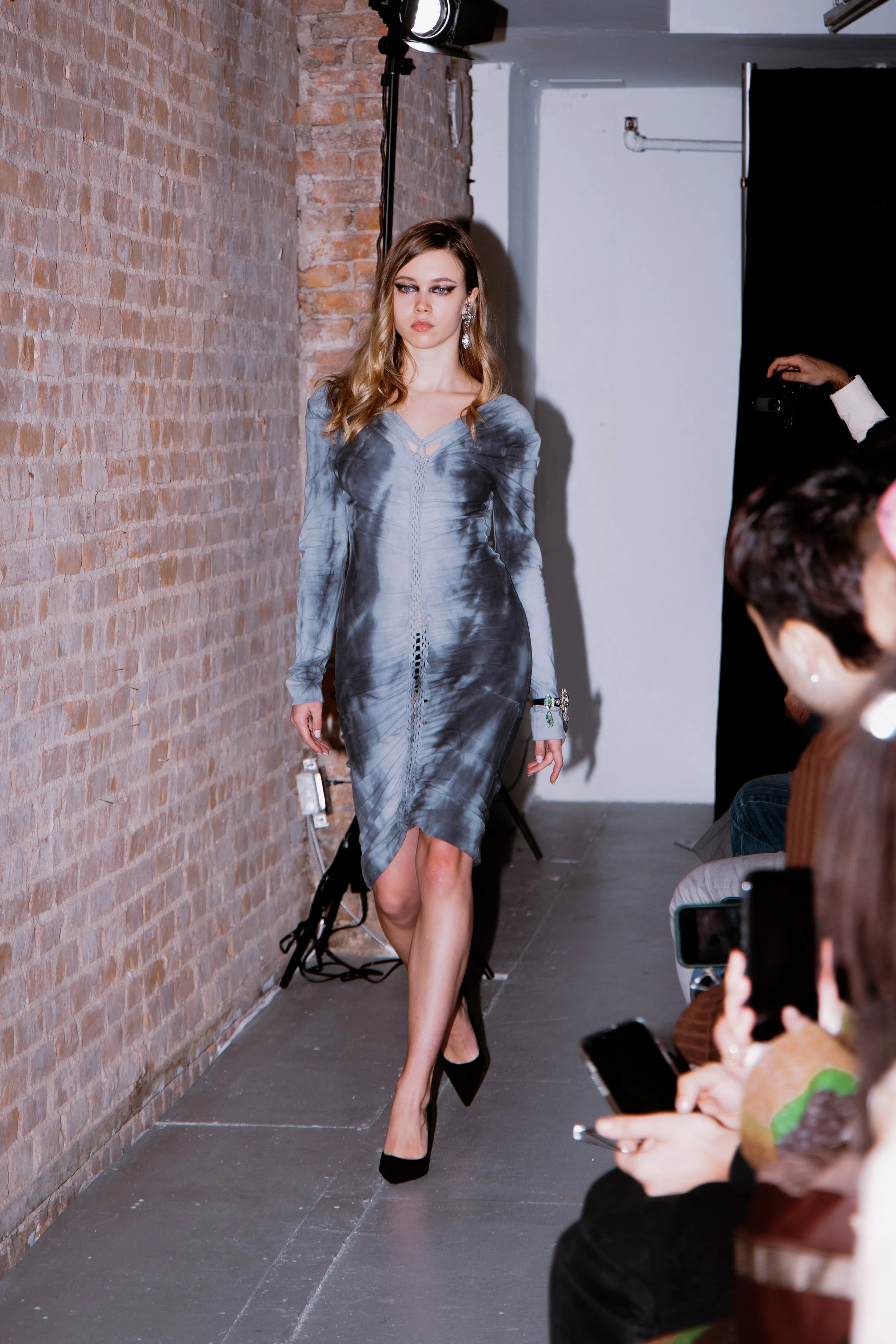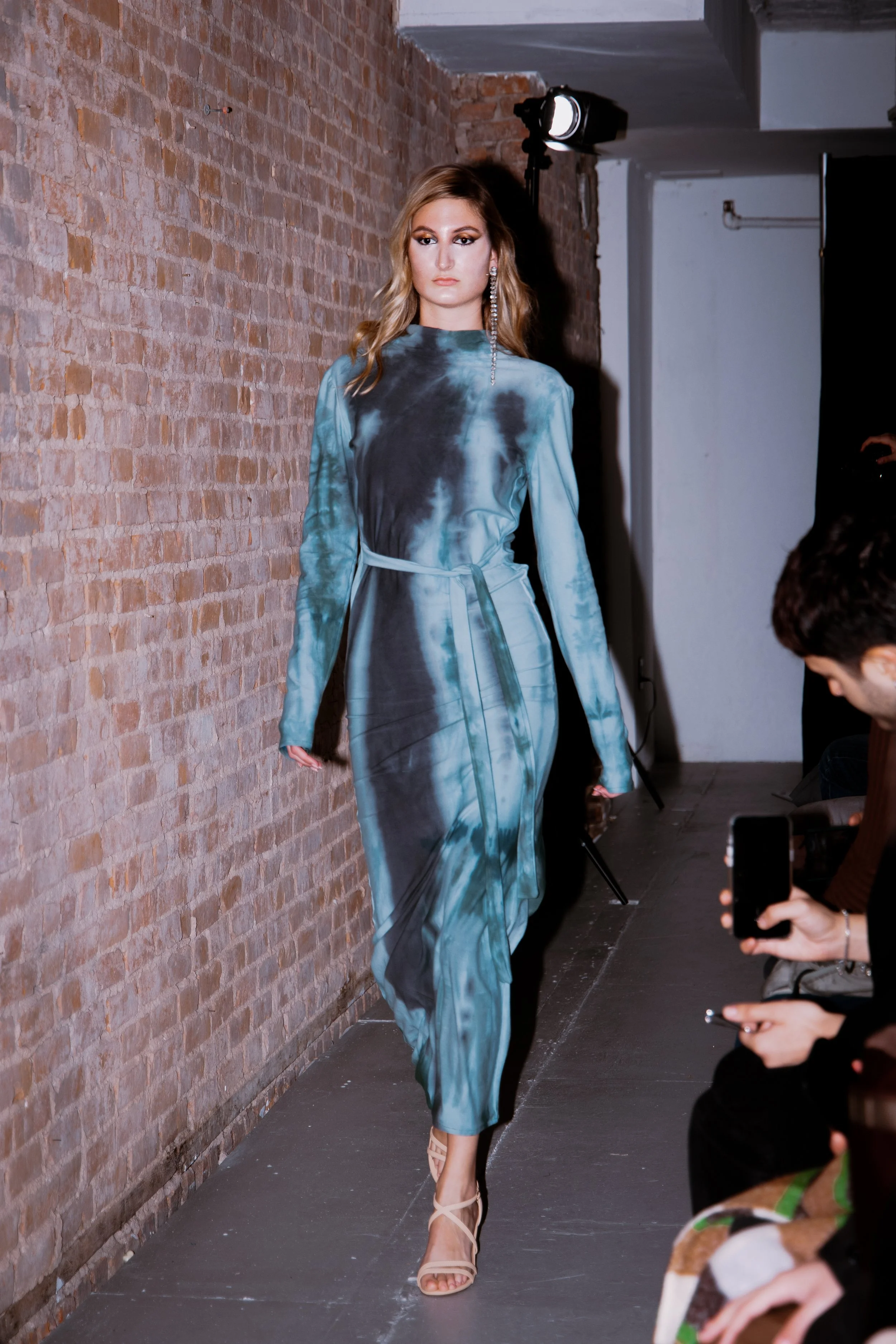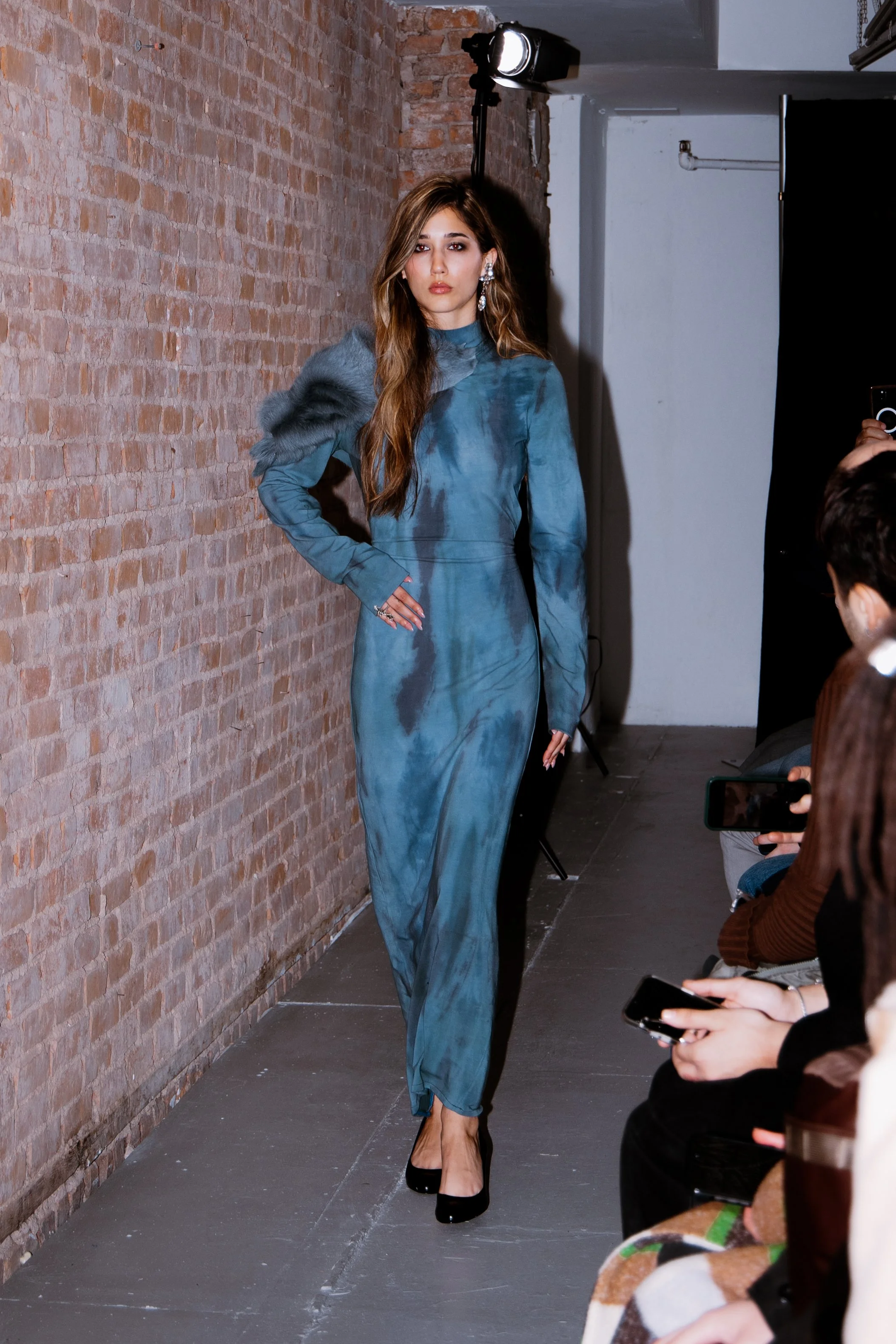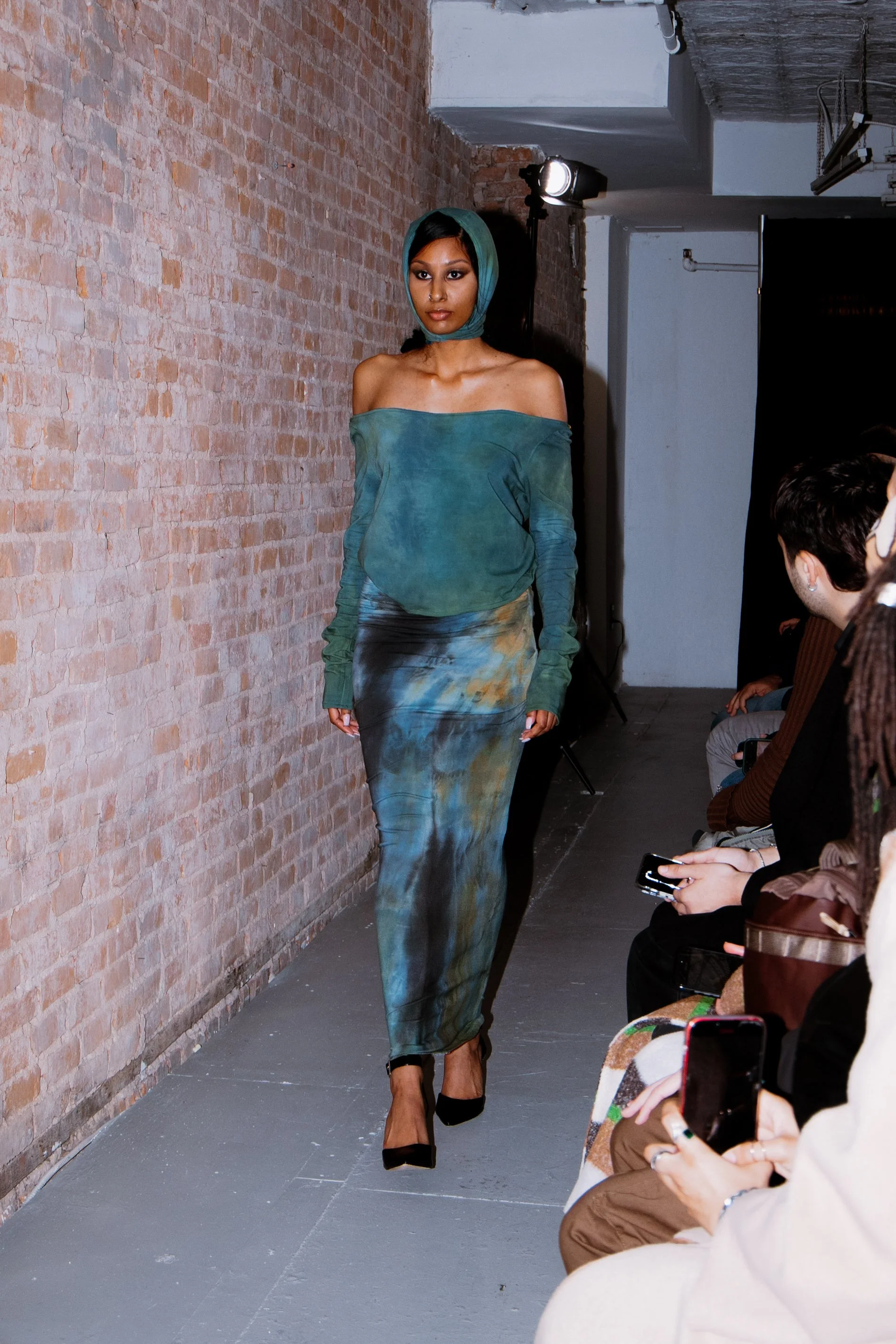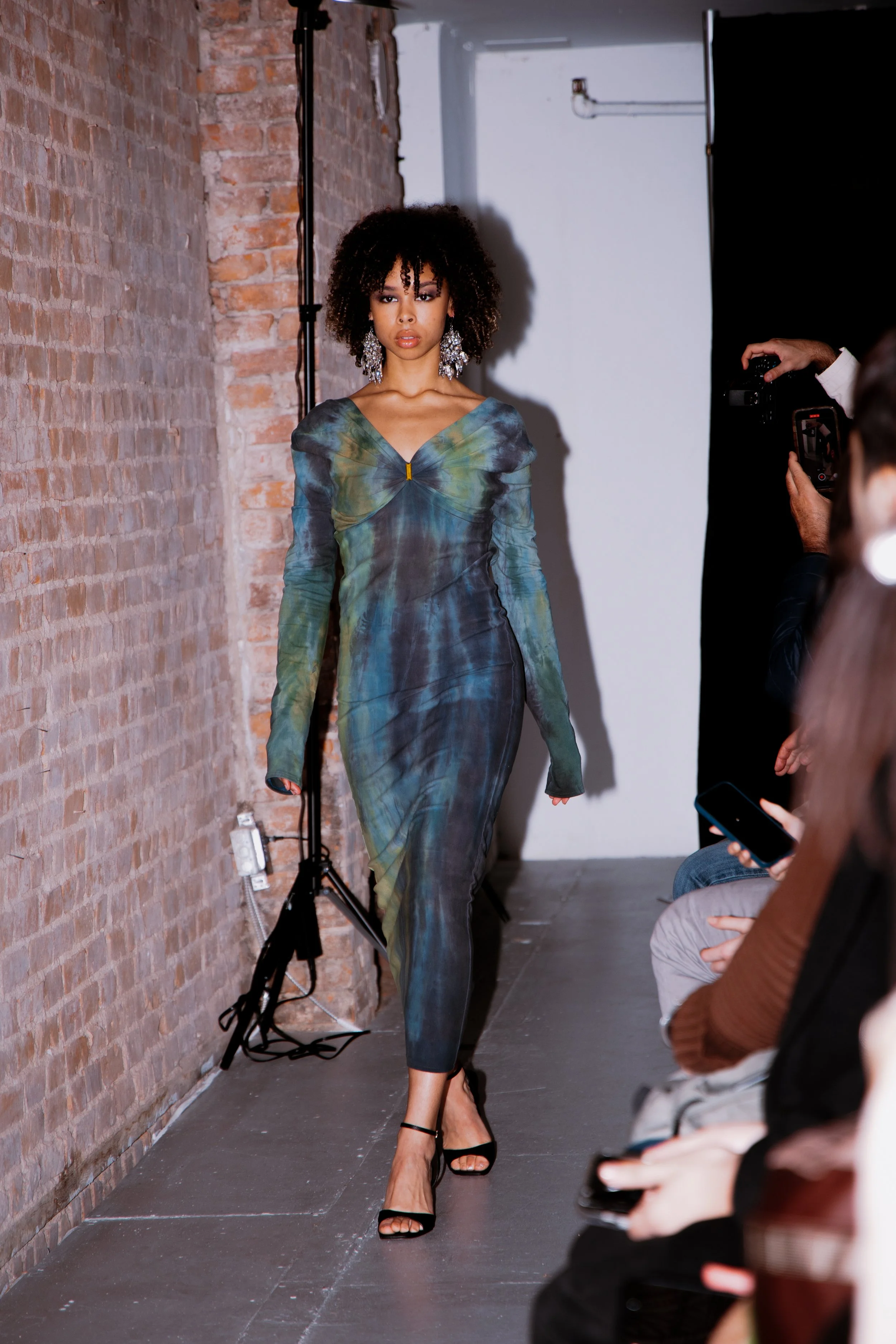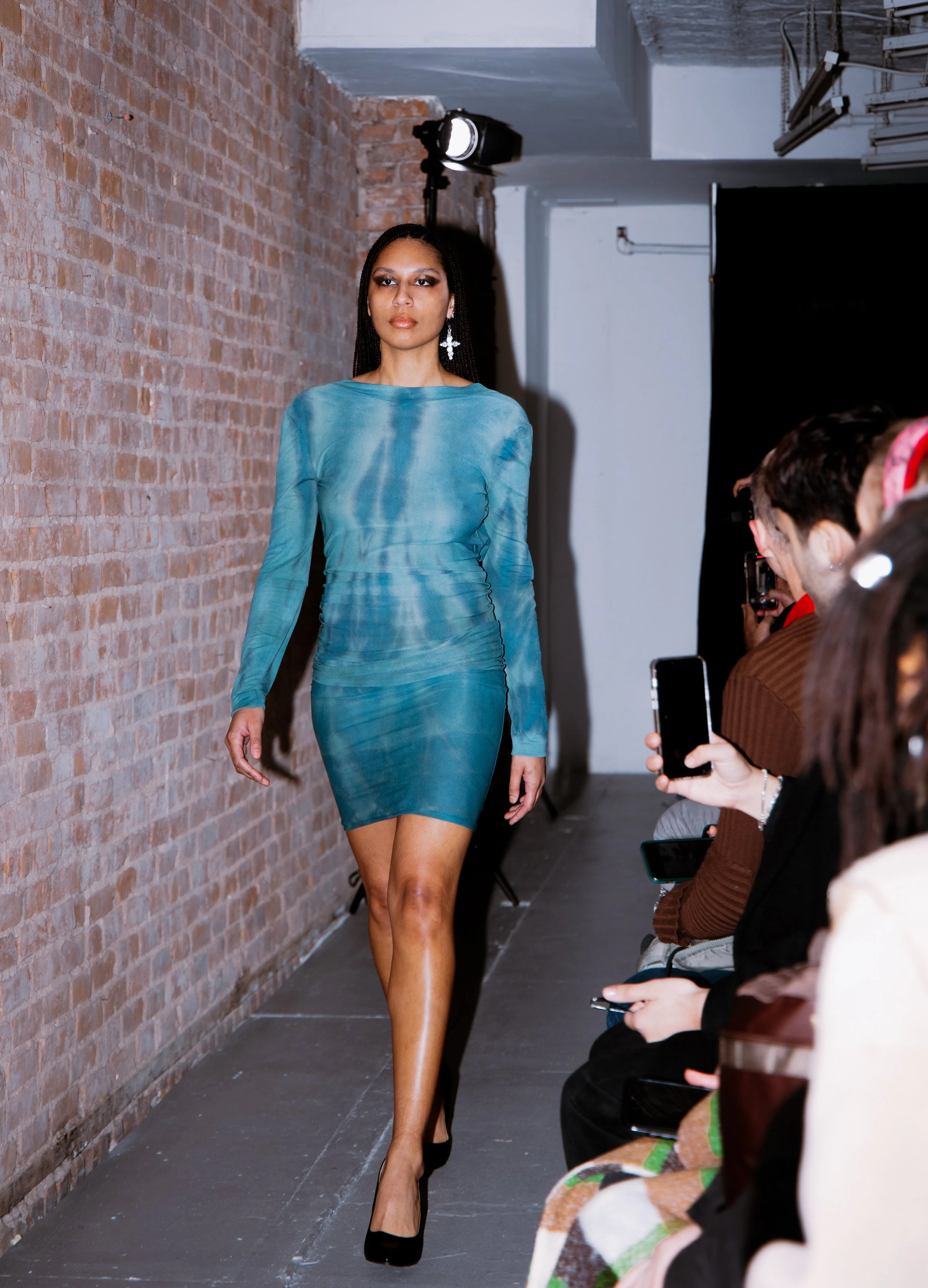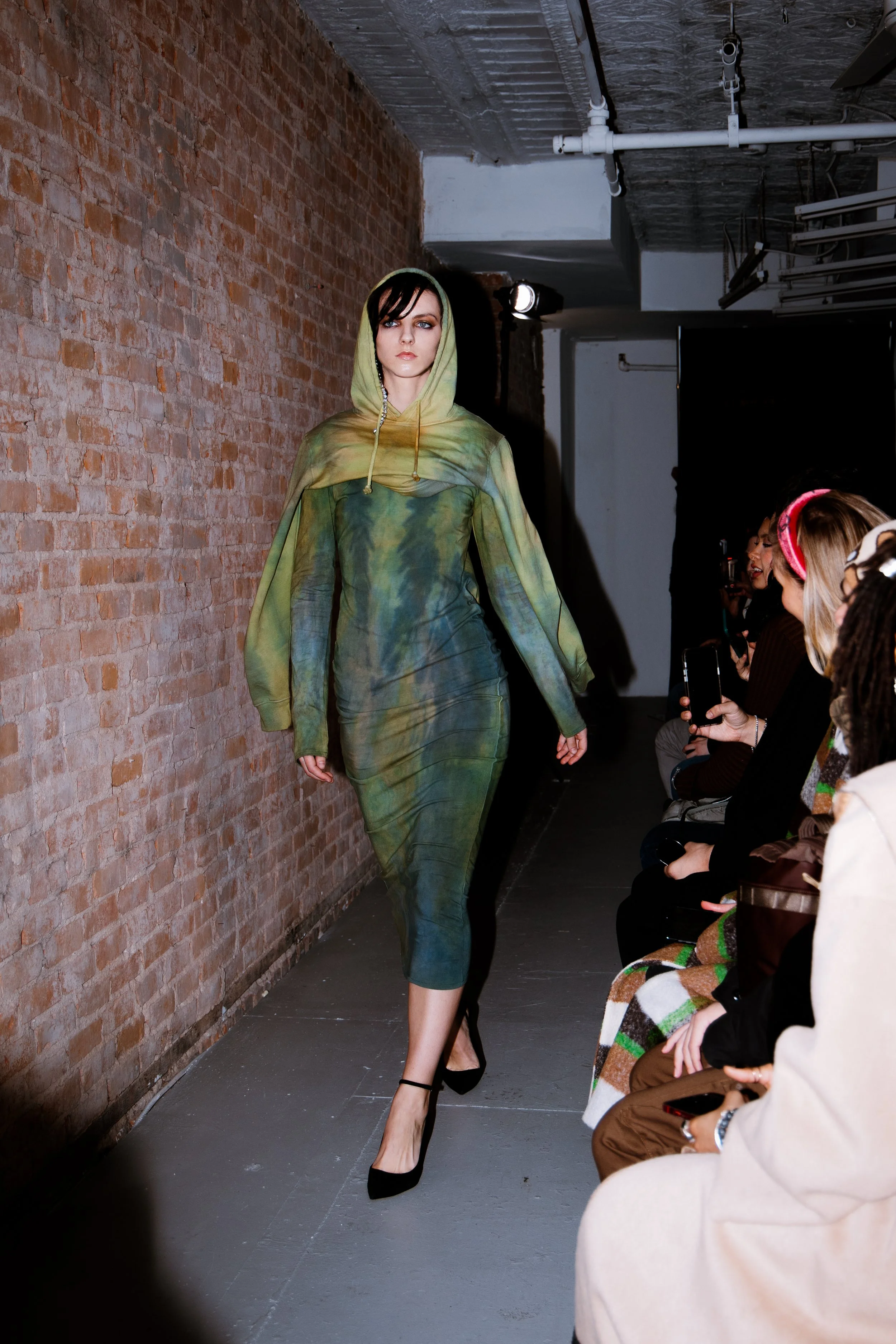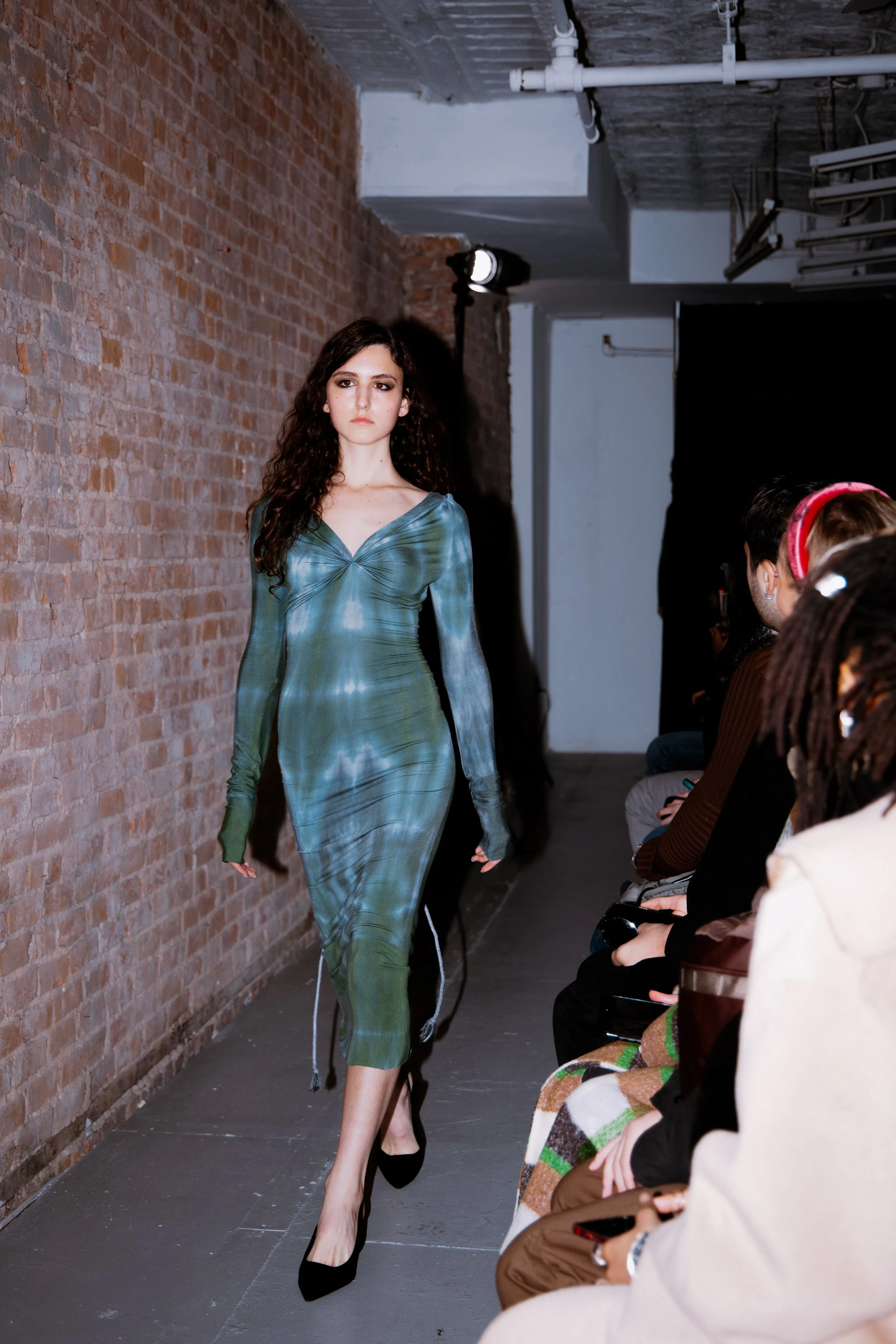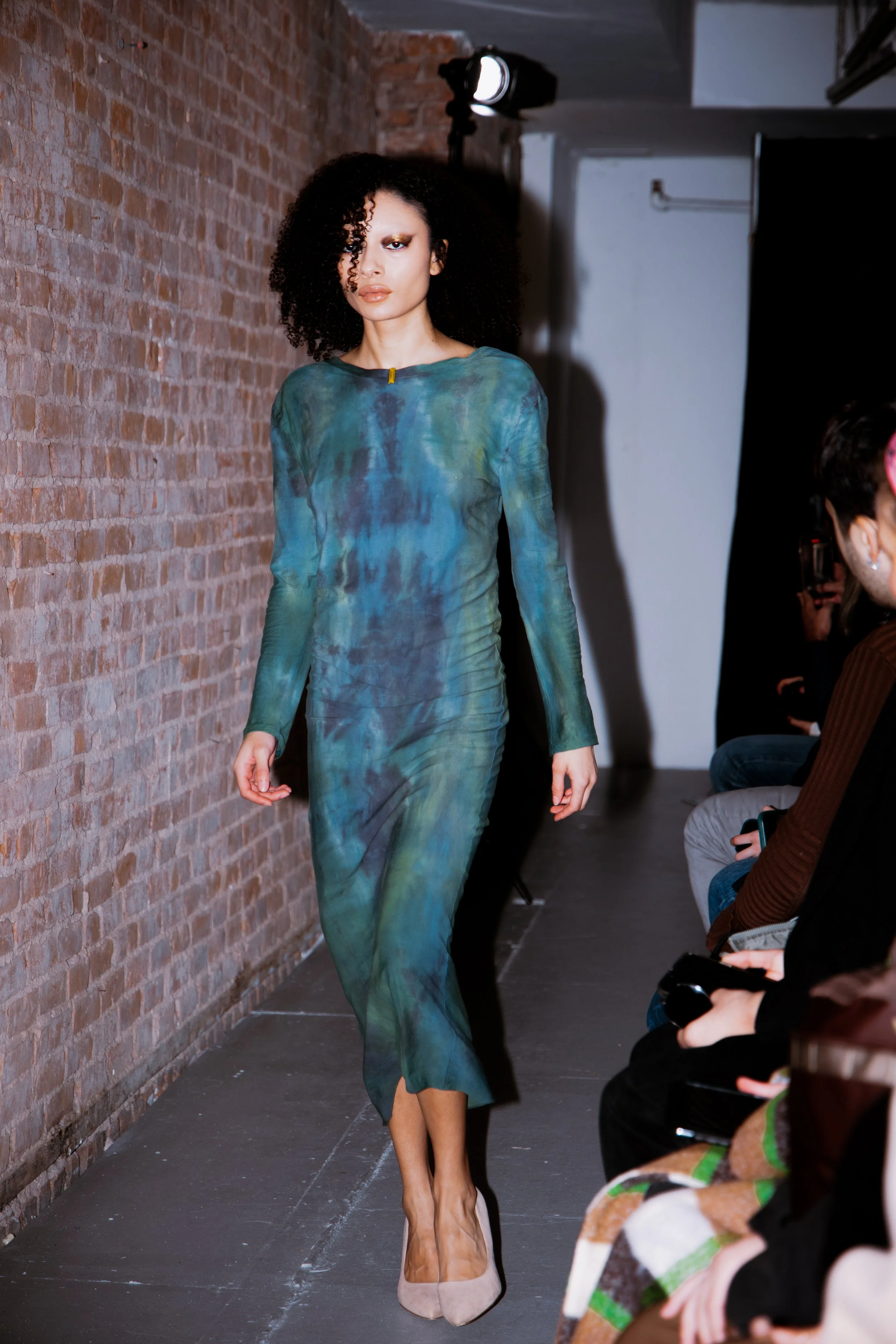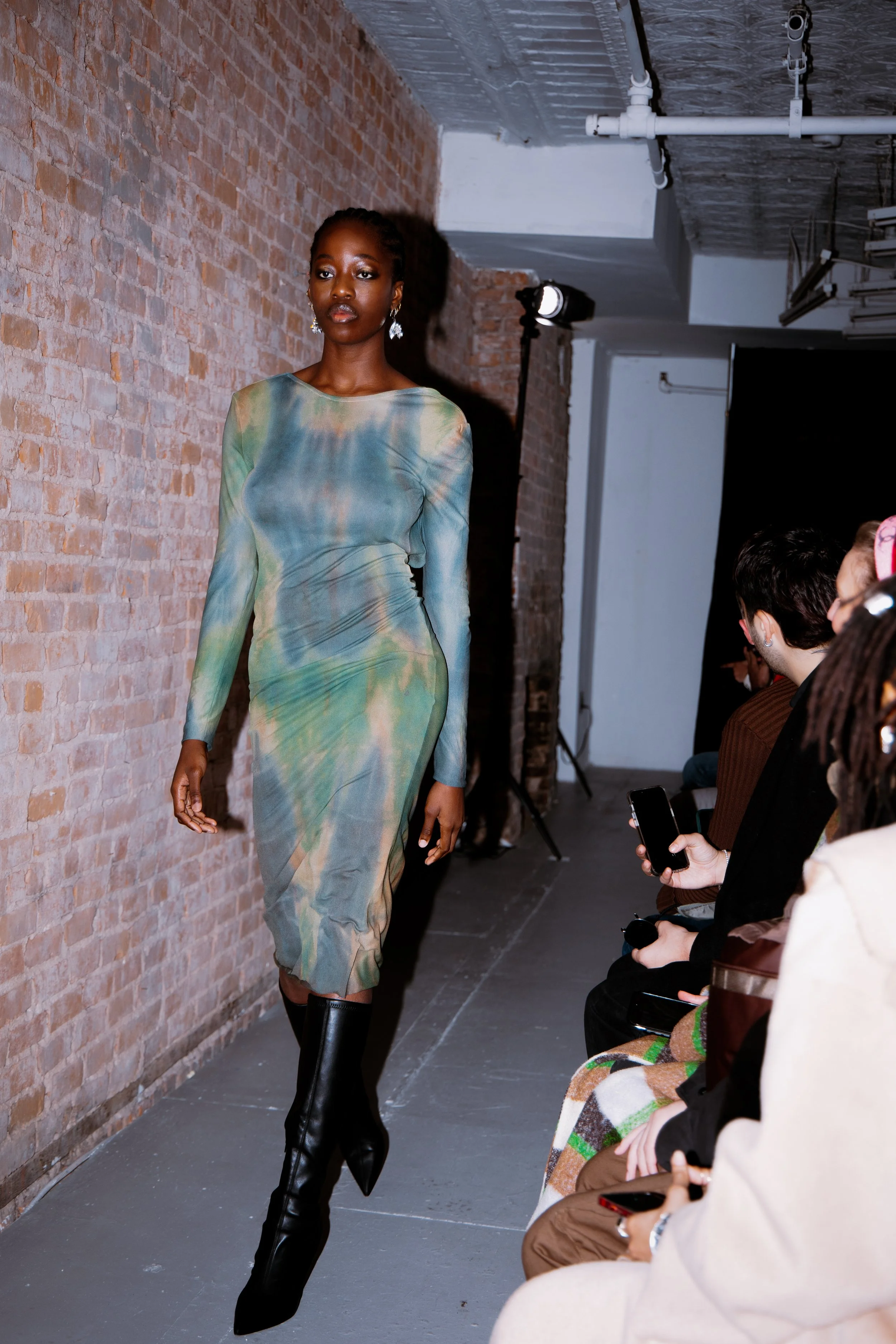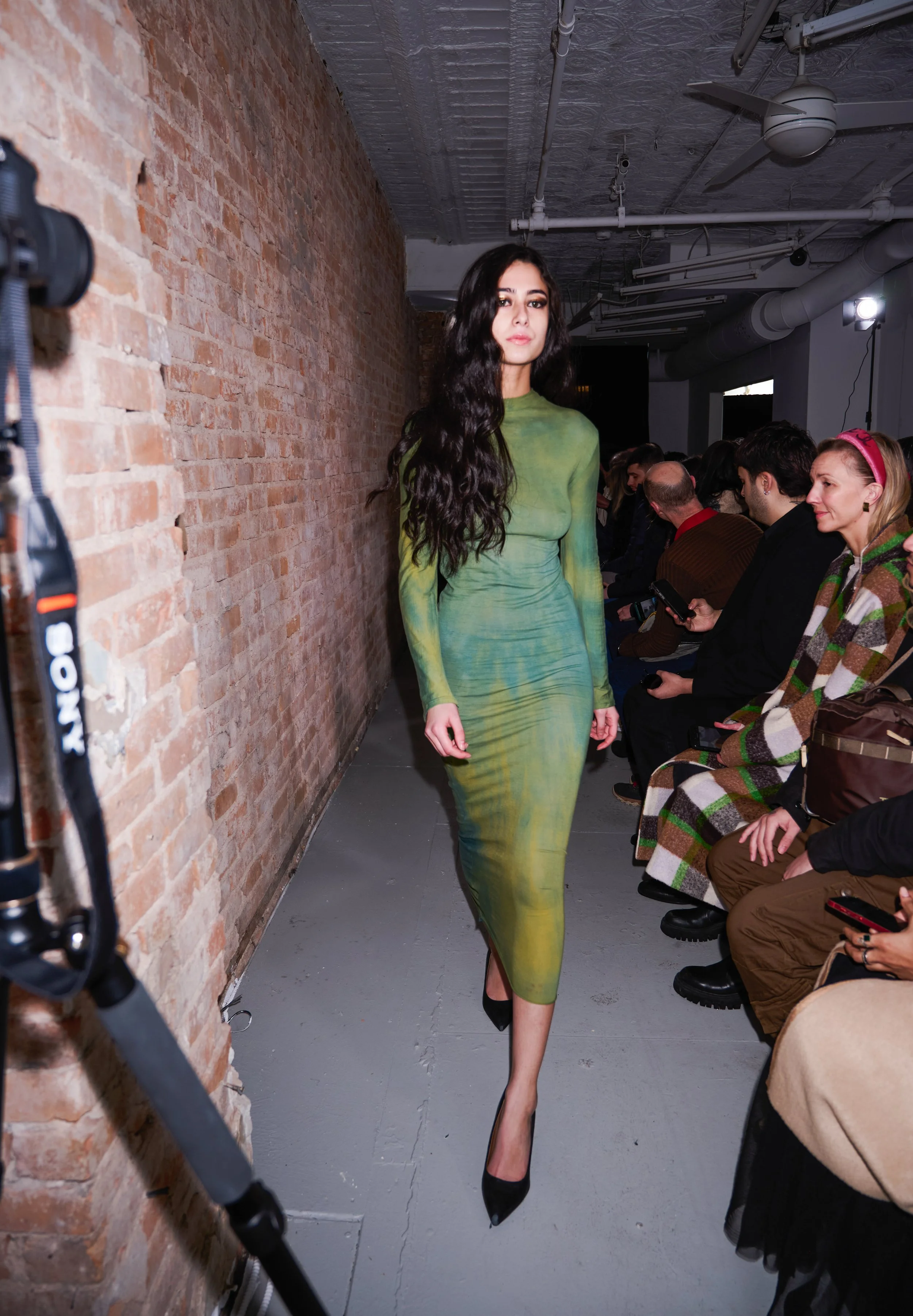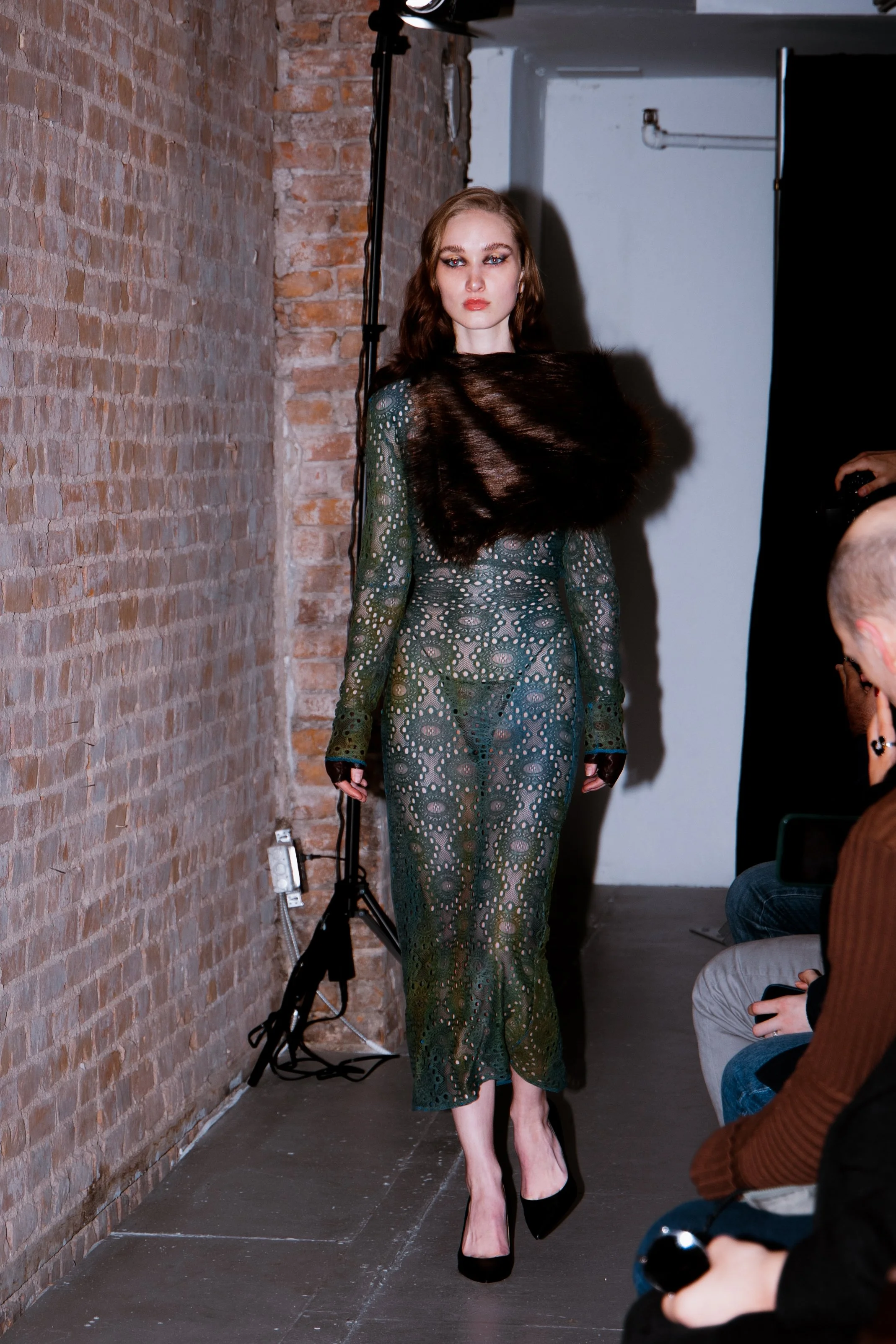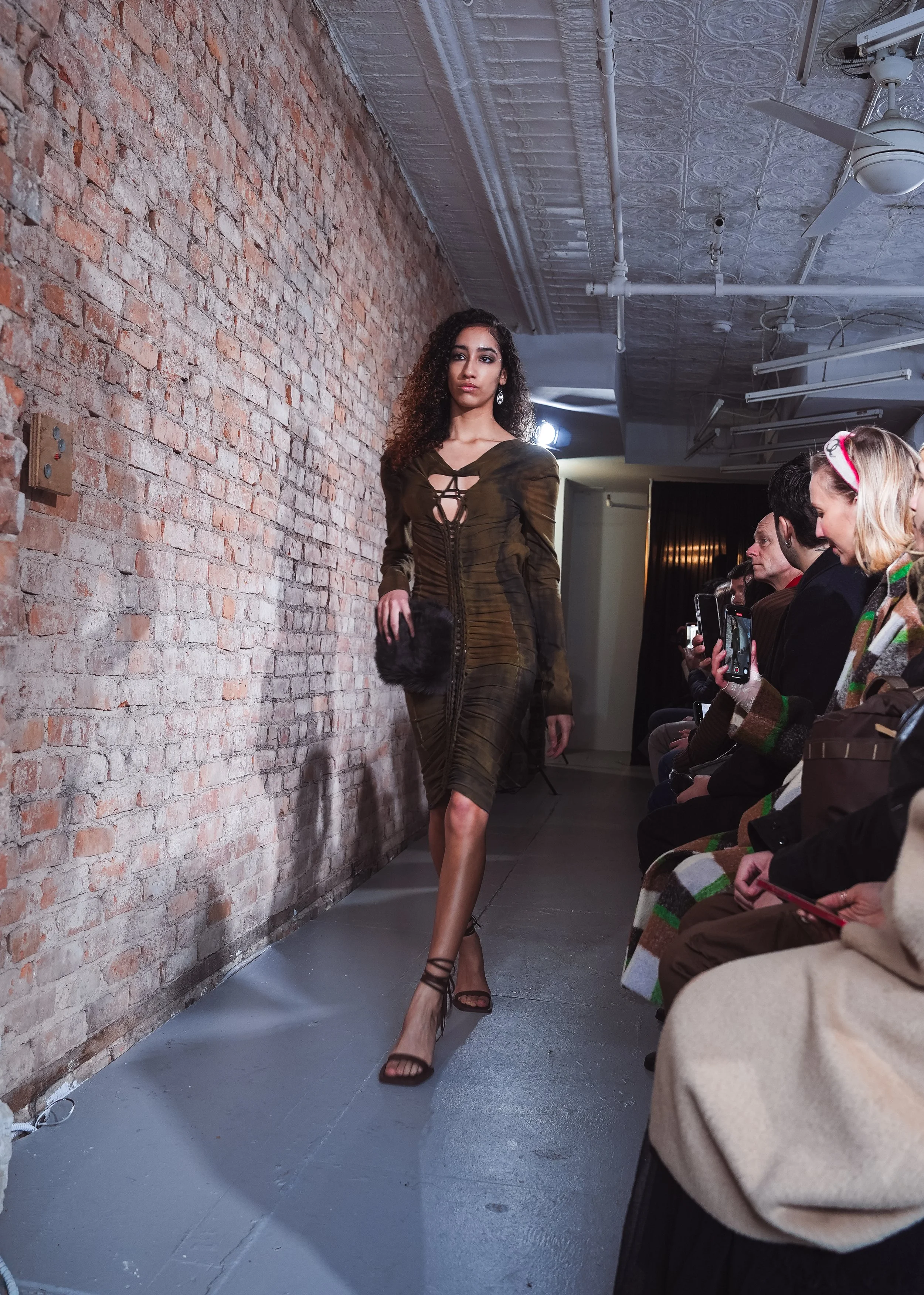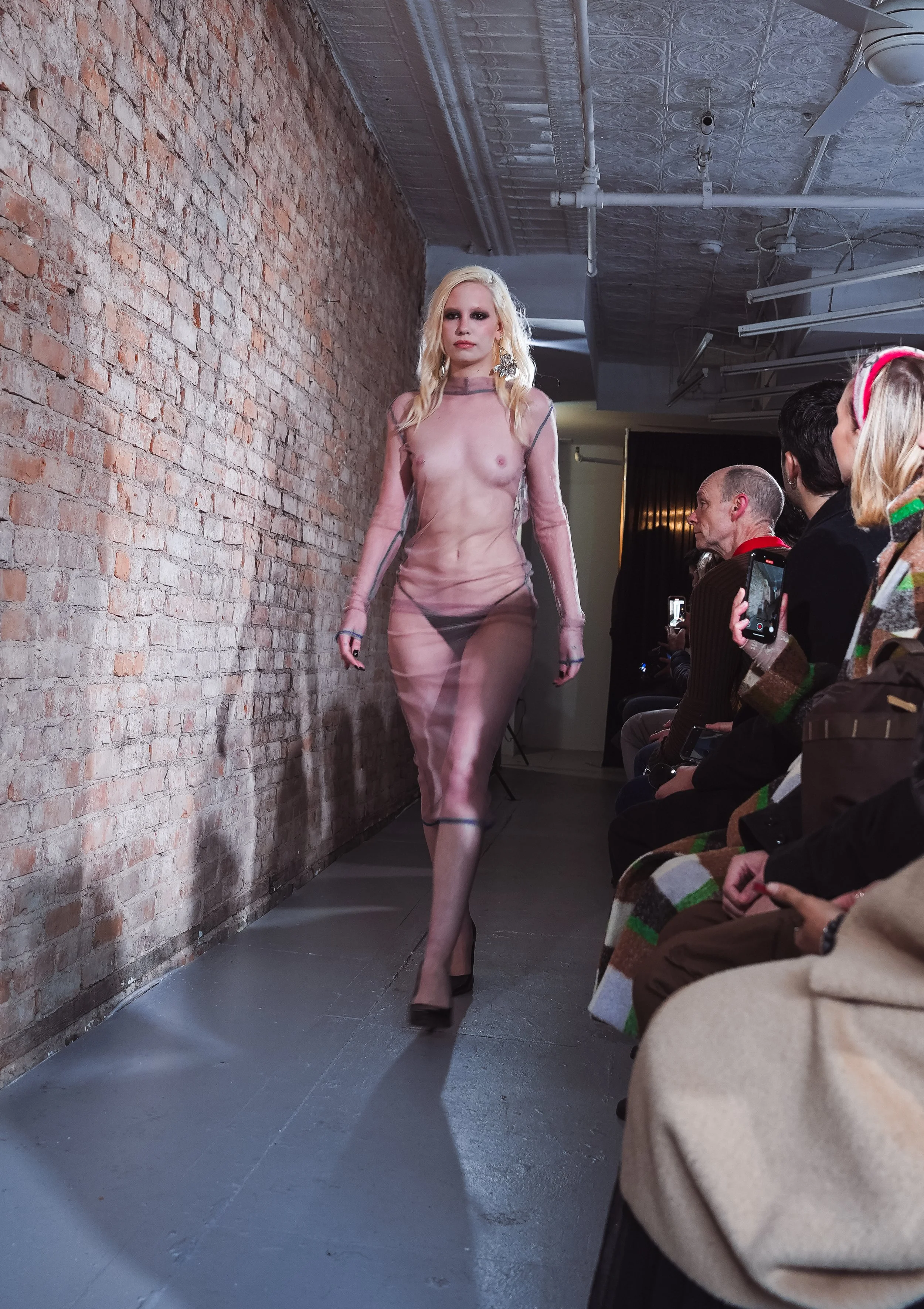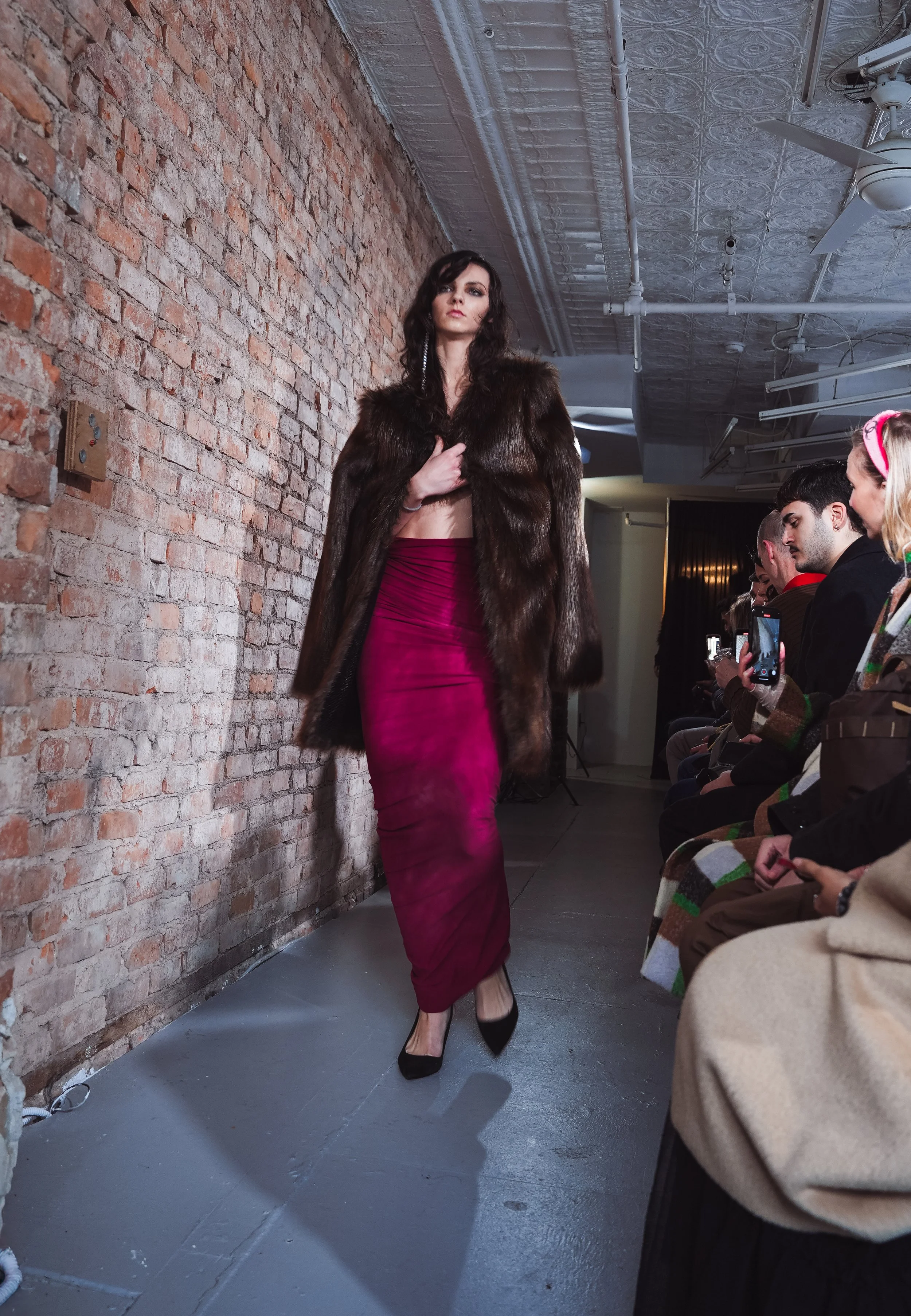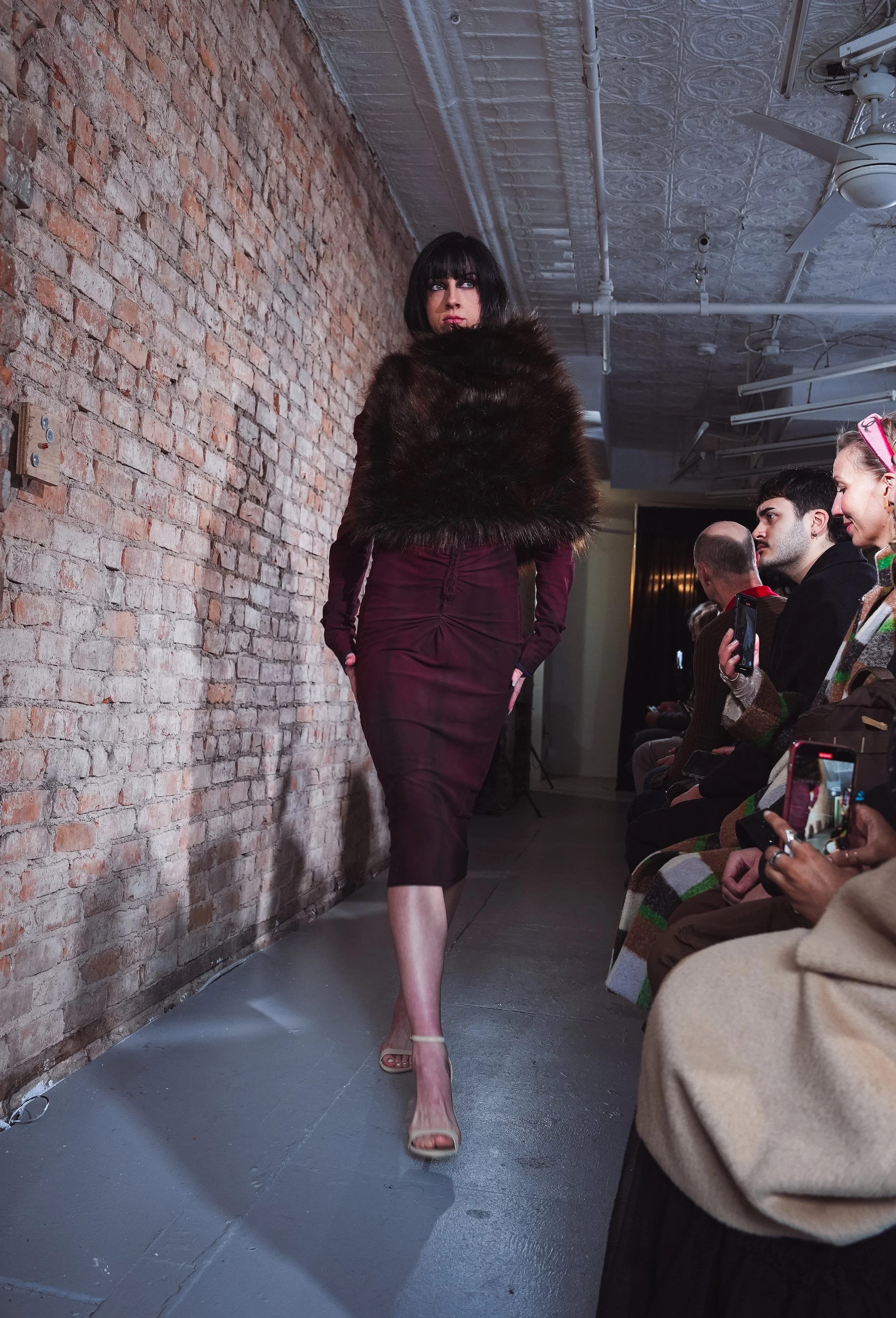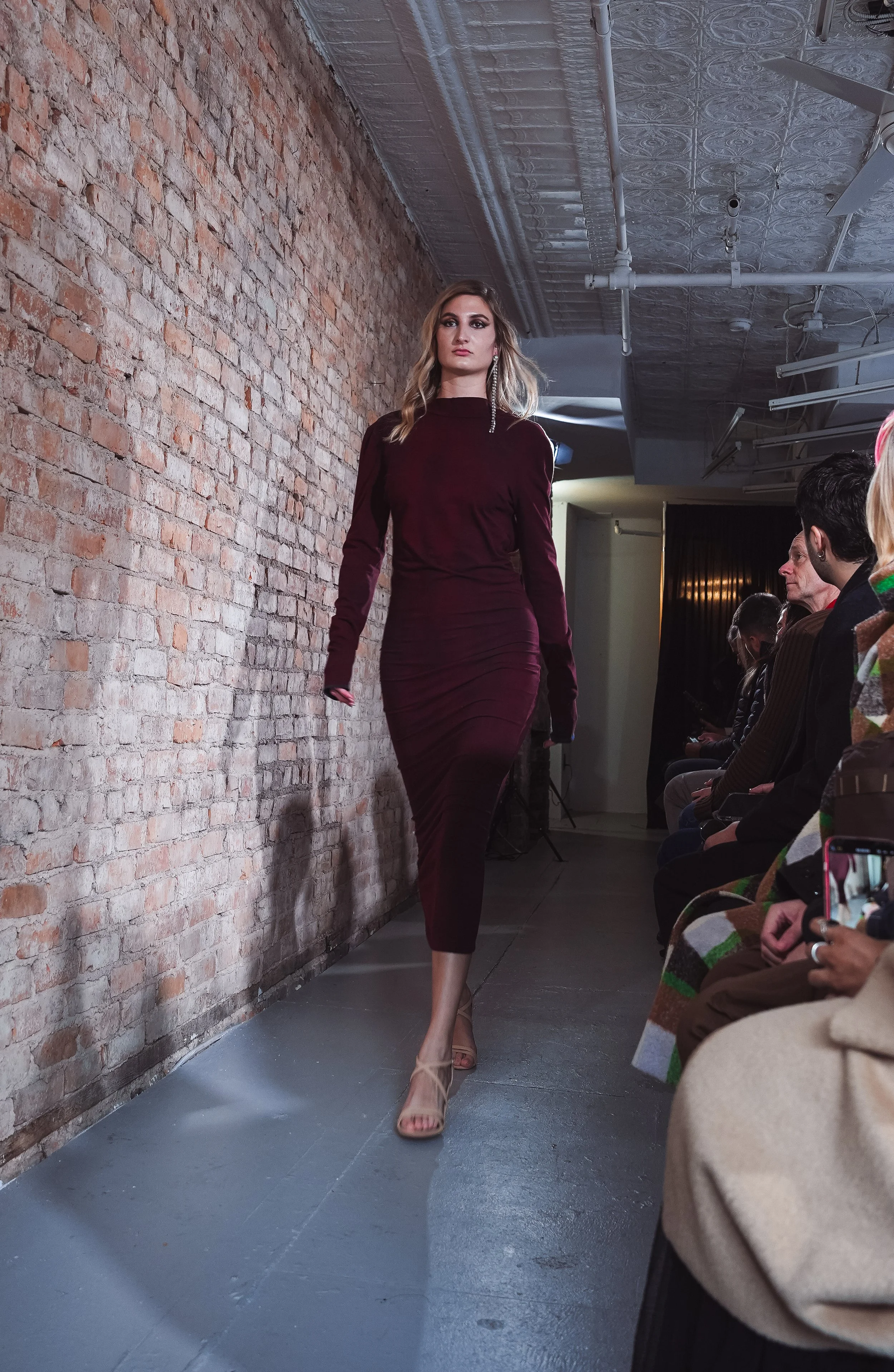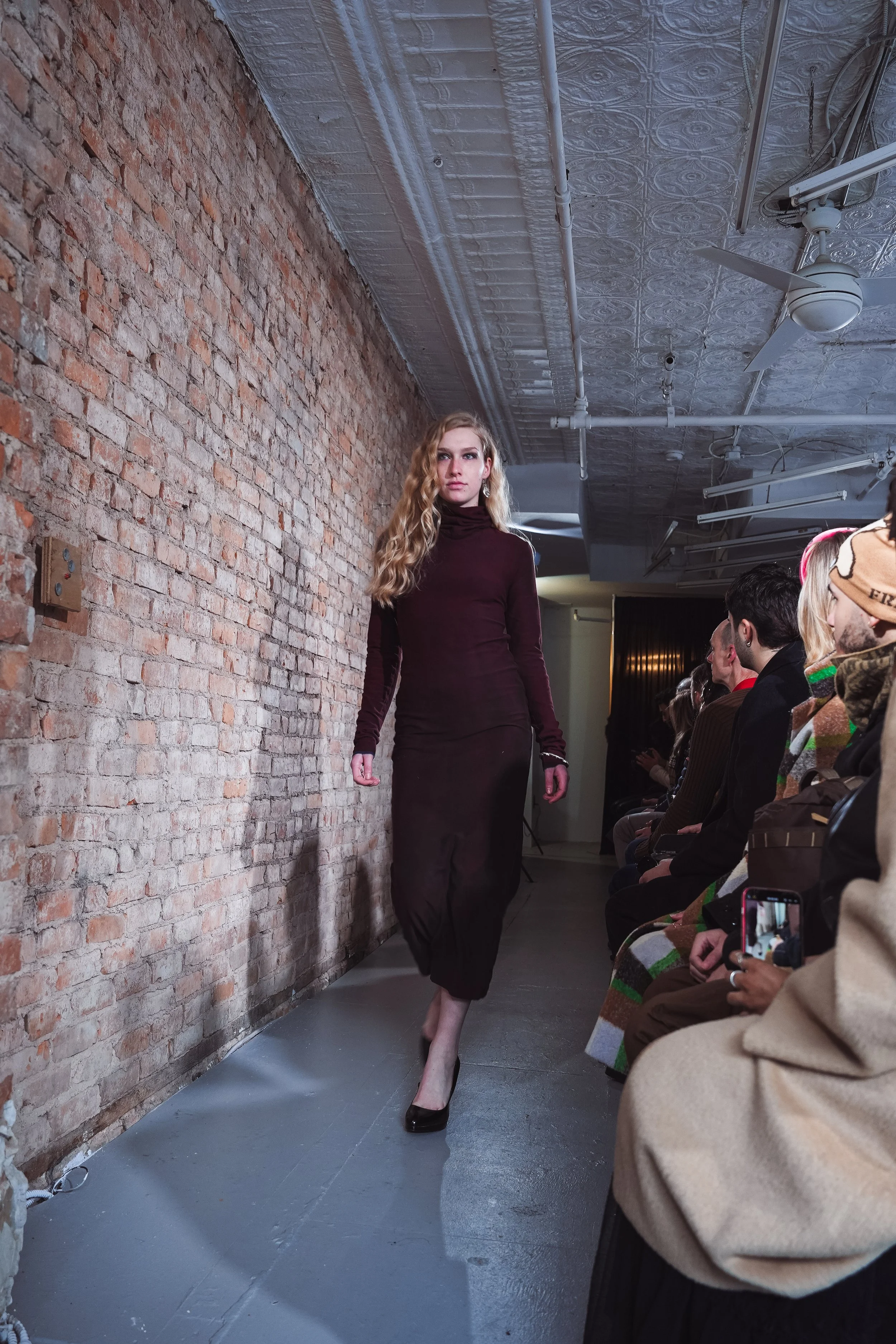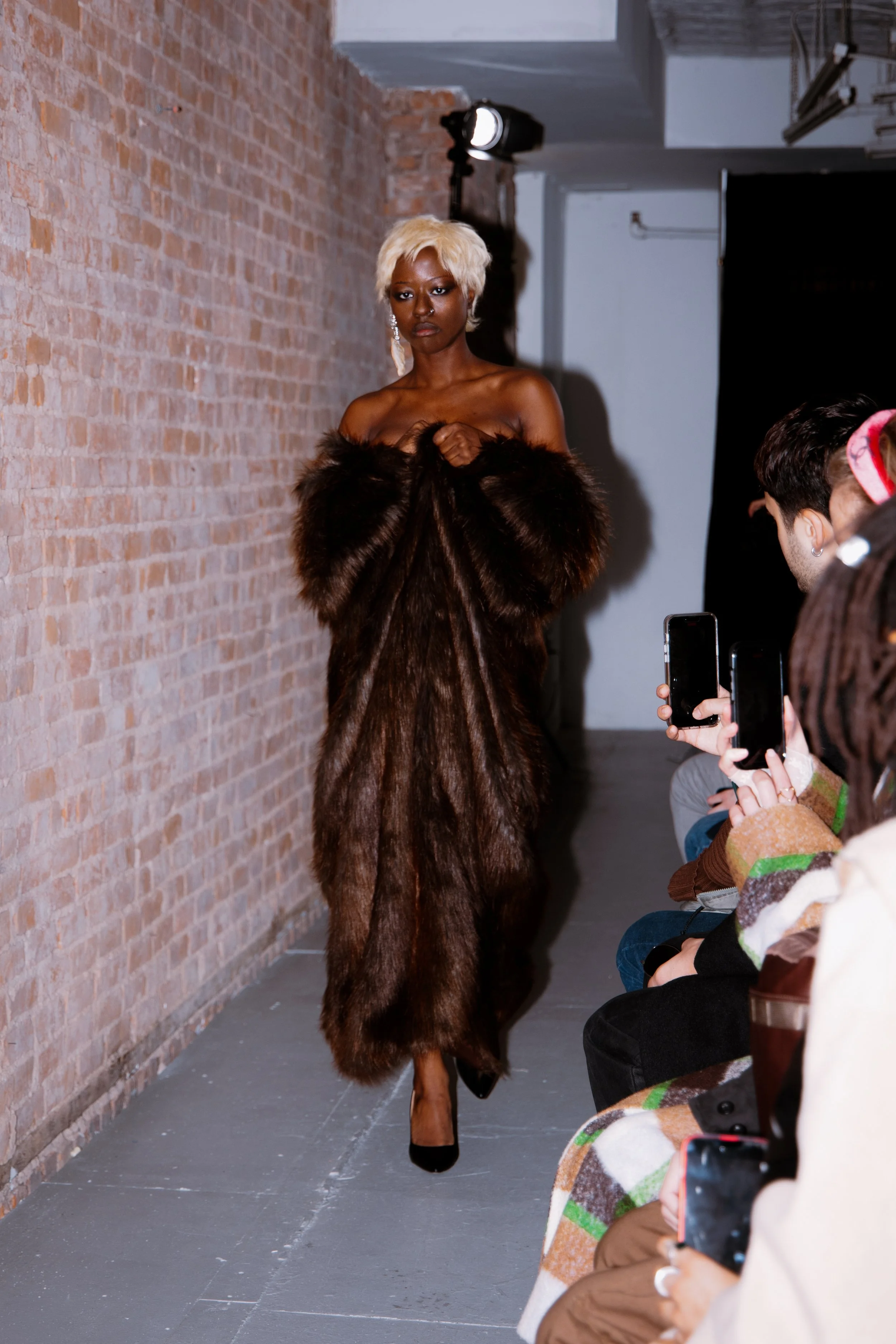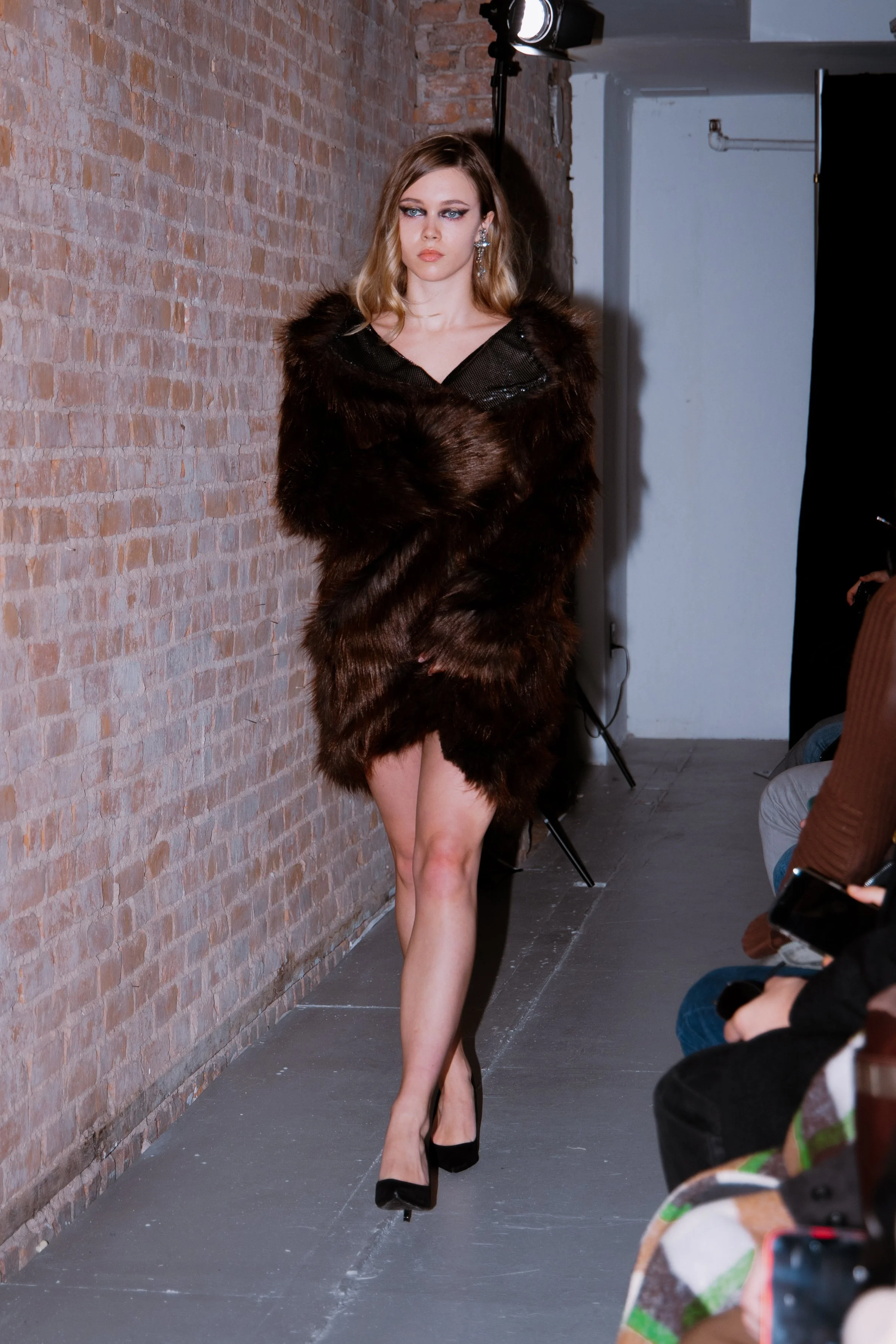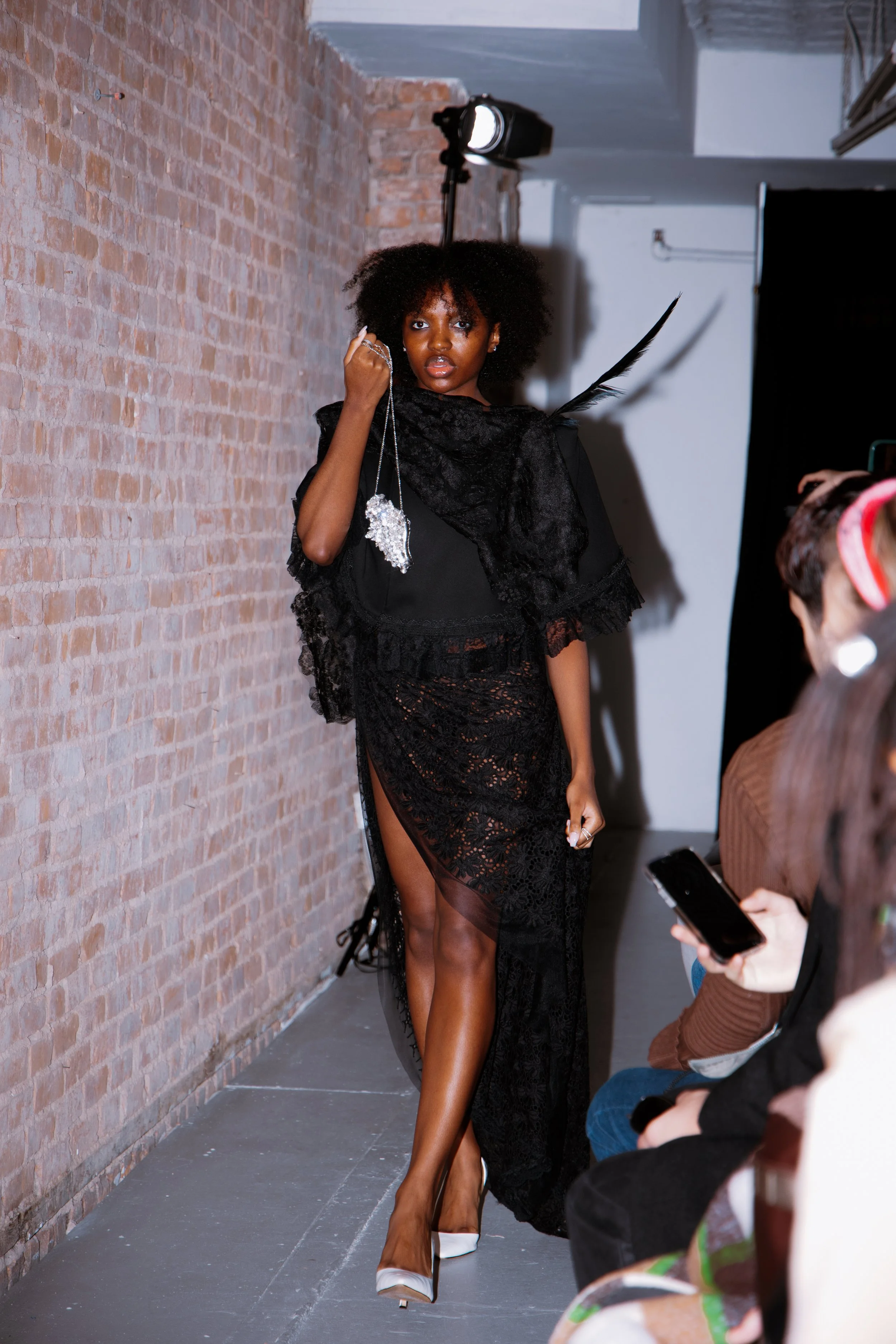CICAEDIA Fall / Winter 2025: A Girl Who Went to War.
This collection came from a mix of fear, exhaustion, and anger, but mostly fear. It was made at the very start of what now feels like a turning point in American history, when the first quiet removals and restrictions on queer and trans rights began spreading nationwide. It was the moment the air shifted. You could feel something closing in, laws and language changing, people becoming cautious again. Those early whispers shaped the way I saw everything that season.
The idea began with queer erasure, what it means to be seen, silenced, or forced to hide in plain sight. The collection started in white, a room of untouched garments that felt sterile and disconnected. Then came color, hand tie-dyed into muted, bruised tones of rainbow. The process was uneven and unpredictable, but that became part of it. The clothes were meant to look like something once vibrant that had faded through time and exposure, a pride flag that had survived too long in the sun. Faded but not erased.
The silhouettes were structured but restrained: long sleeves, high necks, covered fronts. But most of the backs were exposed, cut out, peeled back, or torn open. That contradiction was intentional. I wanted the clothes to feel both defensive and vulnerable at once. Because queerness often lives in fragments; half-seen, half-hidden, just surviving.
Materials shifted between fragile and heavy, soft jersey, embroidered lace, and a faux fur coat so dense it almost pulled the model down. It didn’t. Lined with black chainmail, it became its own paradox: softness reinforced from within. Every piece was hand-dyed, some edged in bright electric blue, a mistake that refused to disappear and eventually became a signature of the collection.
But as a whole, I wasn’t satisfied. The fit was off in many places. The timing was bad. Some looks felt forced, others unfinished. It reminded me of my earlier fall collection, another case of a strong idea rushed into reality before it was ready. This one was even more intense: the entire collection was made alone, without a team, in just a week and a half. There were moments I loved, the jewelry, the symbolism, but the execution didn’t match the vision.
The concept originally centered around a soldier, a woman lost in the jungle, stumbling upon an ancient temple filled with relics and spiritual debris. But over time, that soldier stopped being a separate character and revealed herself as her, the CICAEDIA woman, gone exploring before anyone realized she’d vanished. The jewelry was meant to feel like what she found there: artifacts too heavy to carry but impossible to leave behind, the only tangible evidence of a story that would remain untold. That was the narrative framework for most of the design process, until about a week before the show, when it became clear I wouldn’t have the time or resources to build military garments or fully render that mythology. The idea was stripped back to what I could actually make, a series of hand-dyed jersey pieces, constructed quickly but carefully, bound by their own exhaustion.
What I was able to realize fully was that sense of storytelling through the jewelry. Every piece reflected that original narrative with clarity: they looked and felt like objects that could have been unearthed in some forgotten temple, heavy, weathered, deeply symbolic. They carried the weight of history and secrecy I wanted them to, becoming physical anchors for a myth that the clothes themselves couldn’t always reach.
The first piece I made was a necklace, a statement piece shaped like a jeweled snake head, roughly the size of a fist. It was built by hand, covered in glass stones soldered one by one, meant to hang heavy against the body. It appears in the final look. From there, the rest of the metalwork followed the same process: hand-soldered, flame-built from raw crystal and metal, fused rather than cast. They were designed with precision and intention, yet given the identity of objects that felt ancient, mythical artifacts weathered by time but still deeply shining, carrying both the illusion of history and the weight of something sacred.
For this show, the base was Charlie Don’t Surf, the fifth mission of Call of Duty 4: Modern Warfare, whose title is borrowed from Apocalypse Now, a film that, along with Full Metal Jacket and others from that era, had been on repeat in my mind at the time. I’d been watching TikTok edits that glamorized that whole lineage of pro-America, pro-military cinema, with all its undertones of breakdown and insanity, and I wanted to pull that tension, the seduction and the sickness of it, into the show’s sound.
The show opened with over a minute of that mission audio layered with scattered sounds of war, helicopter rotors, static, distant commands, while an AI-generated British woman’s voice cut through the noise:
“CICAEDIA v3964 is overheating. Targeting opposition on the ground… Await drop-off instructions… 5, 4, 3, 2, 1. Go.”
Only after that buildup did the show’s musical core begin: “We” by Home Video, a niche band I’d first discovered years earlier in a CSI DNA-lab montage. Its strange, mechanical pulse ran beneath the chaos, grounding the spectacle in something almost human.
Then came the finale, the Angel of Death. The only black look. A structured bolero shedding a single feather at the neck, a sheer lace skirt, the jeweled snake emblem held tight against her chest like the severed head of an enemy she’d carried back from battle. Her walk was staged as a dramatic closing sequence: over the roar of helicopters landing and distant shouting that dissolved into explosions, the voice returned almost indifferent:
“Status reported. Recovery mission failed. Twenty-seven soldiers are unaccounted for. Tracking unavailable.”
“Transmission interrupted. Helicopter relay incoming. Head to pickup location and await further instructions.”
Then, just as the signal seemed to go dark, it came back, faint but present. The implication was sudden and deliberate: she wasn’t gone after all. She’d been lost, wandering somewhere out there in the jungle, but now the GPS had reconnected. A location existed. She could be found.
Internally, this moment became more than a narrative beat, it was a metaphor for this version of the CICAEDIA woman herself. I had struggled to integrate her story and personality into this process in a way that felt complete, and this felt like a way to bring her back into it. It’s another story of hers that will remain untold, a strange chapter she’ll never speak of again, but she has the haunted, historically rich, handcrafted jewelry to remember it by. That felt like an honest reflection of how I feel about the collection, too. I don’t want to return to it, and I don’t want to pick apart the ways it faltered, but I’m still left with the brilliant, handmade artifacts it produced. Pieces that carry weight and false-memory, even if the story itself stays buried.
And beyond her story, there was a larger weight I couldn’t ignore. There were undertones of wanting to act, to represent some form of resistance to war and a longing for peace. Many of the hues, though chosen instinctively, echoed the colors of the Palestinian flag, and that wasn’t lost on me. I have consistently believed that the staggering death toll in Gaza has been catastrophic, not just in its relentless violence, but in how it has reshaped the climate of the entire world. It is a destruction that feels unspeakable from someone like me, and yet it has been impossible to ignore. That weight, the horror of injustice, the sight of death and displacement, and the helplessness of watching it, hung over this collection as much as any personal fear.
And with that, the music shifted, A Quiet Place by Home Video began to play, dark and somewhat charged, carrying the show to its end. The finale wasn’t closure; it was the suggestion of something still moving beyond the frame. A trace picked up again. A life, or maybe just a memory, still pulsing somewhere out there.
A Girl Who Went to War was my attempt to process everything: fear, politics, queer identity; through the framework of survival. It didn’t fully land, but it mattered. It marked the point where my work started reaching beyond emotion and into myth. Even if the story never fully came through, the intention did: to show what it looks like when someone soft is forced to show some of their fight, or at least their lower back.
Show-Notes Written by Yitzhak Rosenberg
Designed by Yitzhak Rosenberg
Runway Production, Set Design, & Styling by Ryan Scheriff
Casting done In-House
Hair & Makeup by Joey DeVirgilio
Runway Photography by Felicia Disalvo, Gianna Basile, Reed Byrd, & Francesca Bates
Campaign shot by Nick Brito
Assisted by Jimmy Platto, & Enrique Marshall
With Hair & Makeup by Reed Leibowitz
